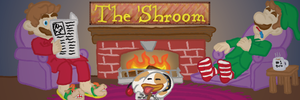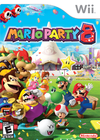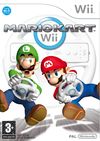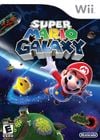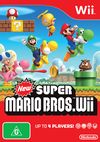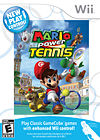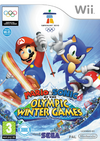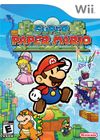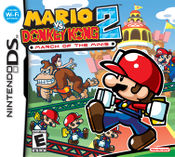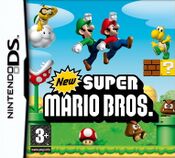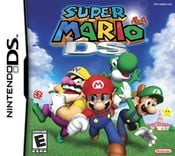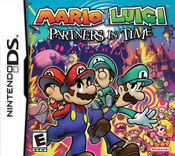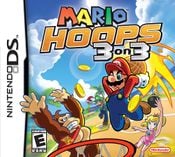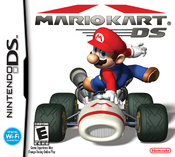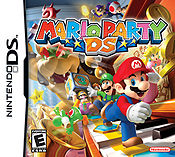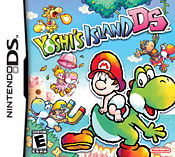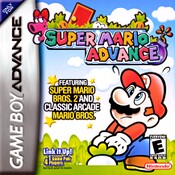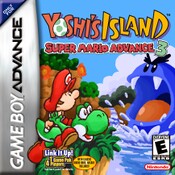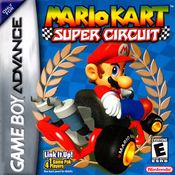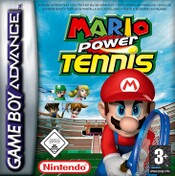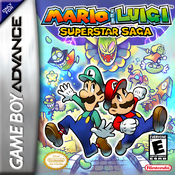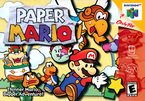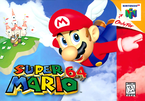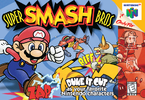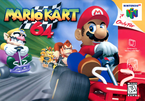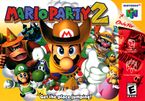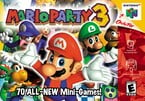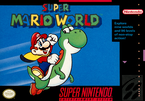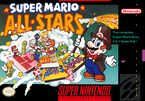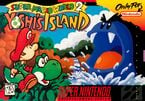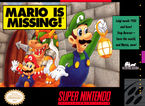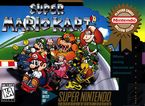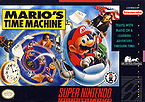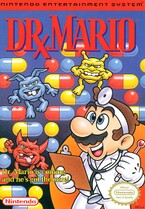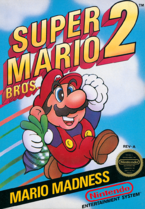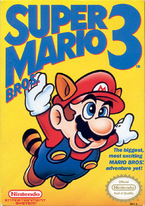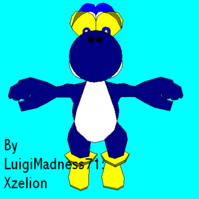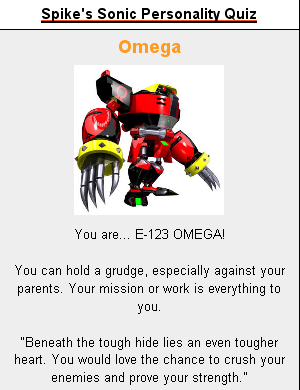|
|
| (84 intermediate revisions by 6 users not shown) |
| Line 1: |
Line 1: |
| <table style="color:black;background:#98FB98;border:1px solid #151;-moz-border-radius:6px;padding:8px;" width=100%> | | <table style="color:black;background:#98FB98;border:1px solid green;-moz-border-radius:6px;padding:8px;" width=100%> |
| <tr><td> | | <tr><td> |
| | <div class="firstHeading" style="padding-top: 0.4em; padding-bottom: 1.7em; float: center; position: absolute; left: 0.9em;right:0.9em; top: 0%; width: 98%; background-color:#7FFF00;;"><span style="font-family:Comic Sans MS;font-size:150%">'''Status:'''<font color=black>Everybody is saying this 'school' thing. What is it? (Let me guess '''''ANNOYING!''''' |
| | </font></span></div class> |
|
| |
|
| {{quote|Come and-to play! You know you wanna!|LuigiMadness71|MarioWiki}}
| | My UserPage!!!!!! I'm getting my stuff back bit by bit! YEAY! |
|
| |
|
| | <table style="color:black;background:#98FB98;border:1px solid green;-moz-border-radius:6px;padding:8px;" width=100%> |
| | <tr><td> |
|
| |
|
|
| |
|
| | [[Main Page|Hellooooooooo!!]] [[Howzit|Hoooooooowwwwwwwzit?]] [[Notso|Not soooo Bad?]] I'm a editor of the Shroom (Just a little. I'm signing up for Fake Games.) |
| | Go to my [http://spmw.wikia.com/wiki/Super_Paper_Mario%27s_Wiki PM wiki] and please help me with it it! This one to! -->[http://mukw.wikia.com/wiki/Mushroom_Kingdom_Wiki :)]<-- |
|
| |
|
| '''LuigiMadness71''' is a member of many websites, including [[MarioWiki]] and [http://runouw.com Runouw] and has a large collection of videogames, most of them being [http://en.wikipedia.org/wiki/Roms Roms]. First joining a website called well, Runouw, LuigiMadness71 became members of many diffrent websites. Along playing these videogames LuigiMadness71 found many glitches including a [[Super Mario Sunshine]] glitch were [[Yoshi]] can eat fruit without [[Mario]] sitting on him. | | '''<font:Big> Do ya wanna know who's hea? Go over ther ---> {{:Special:WhosOnline}}'''</font> PLEASE GO IN THE LICENCE BOX AND LEVEL UP MY CARD (MKWii and Brawl) |
| | |
| ==Luigi!==
| |
| {{quote|Yay for me, Luigi!|Luigi|New Super Mario Bros.}}
| |
| | |
| '''Luigi''' is [[Mario]]'s younger, taller, twin brother. Luigi has assisted and fought alongside his brother on many occasions. Throughout his life, he has lived in Mario's shadow, developing both cowardly and heroic tendencies. ''[[Mario Bros. (game)|Mario Bros.]]'' marks his first appearance in a ''[[Mario (series)|Super Mario]]'' arcade game. Originally a color swap of Mario, Luigi was created to facilitate a second player option. Since the two player mode was dropped from most ''Super Mario'' games beginning with ''[[Super Mario Land]]'', Luigi had gained his own identity and personality.
| |
| | |
| Luigi was born when [[Shigeru Miyamoto]] set out to create ''[[Mario Bros.]]''<ref>[http://themushroomkingdom.net/games/mb-arcade The Mushroom Kingdom] (Accessed on 7-2-09)</ref> after being told Mario resembled a [[plumber]], a notion he wanted to officially establish.<ref name="ign">[http://games.ign.com/articles/833/833615p1.html IGN] (Accessed on 6-28-09)</ref> For this particular adventure, however, Miyamoto wished to incorporate a [[Wikipedia:Two-player video game|two-player mode]].<ref name="ign" /><ref name="tiam">[http://www.arcade-museum.com/game_detail.php?letter=&game_id=8624 The International Arcade Museum] (Accessed on 7-2-08)</ref>: Miyamoto's answer to ''Joust''<nowiki>'s</nowiki> stork-riding Player 2 was Luigi, Mario's green-clad younger twin brother with whom he could compete or cooperate with. With 2-player mode in mind, [[Nintendo]] and publishing companies such as Atari gave Luigi immediate publicity, making him the star of multiple [[Promotional references|advertisements]] for the game.<ref name="mbcommercial">[http://www.youtube.com/watch?v=tSte8m4Da6A Commercial for Atari Mario Bros. featuring a live-action Luigi.]</ref><ref>[http://themushroomkingdom.net/mania/a/print/mb-atari.jpg Print ad for ''Mario Bros.'']</ref>
| |
| | |
| ==History==
| |
| {{spoiler}}
| |
| ===Background (''Yoshi'' series)===
| |
| ====''[[Super Mario World 2: Yoshi's Island]]''====
| |
| [[Image:SMW2LUIGI.PNG|thumb|150px|left|The two babies with their family.]]
| |
| {{main|Baby Luigi}}
| |
| In the beginning of ''[[Super Mario World 2: Yoshi's Island]]'', [[Baby Mario]] and Baby Luigi were being delivered to their [[Mama Mario|mother]] and [[Mario and Luigi's father|father's]] home by the [[Stork]]. However, Baby Luigi was quickly snatched away by [[Kamek]] and taken to [[Baby Bowser]]'s [[Bowser's Castle|castle]]. Fortunately, [[Baby Mario]] landed right on [[Yoshi]]'s back on [[Yoshi's Island (place)|Yoshi's Island]]. Baby Mario somehow had the instinct to know where Baby Luigi was and pointed the way to Baby Bowser's Castle indefinitely, and with that knowledge, Baby Mario and Yoshi teamed up with the other [[Yoshi (species)|Yoshis]] to rescue Baby Luigi. After a lengthy expedition, Baby Bowser was defeated, and Baby Luigi was rescued. After the credits, both Baby Luigi and Baby Mario were sent to their parents and finished the journey they had started in the beginning of the game.
| |
| | |
| ====''[[Yoshi's Island DS]]''====
| |
| [[Image:Starchildren1.PNG|thumb|Six of the Star Children.]]
| |
| [[Baby Luigi]] appeared once again in ''[[Yoshi's Island DS]]''. Here, he and several other babies were kidnapped. As [[Bowser]] and [[Kamek]] were searching for the seven [[Star Children]], who could bring him ultimate power. [[Baby Mario]], [[Baby Peach]], [[Baby Donkey Kong]], [[Baby Wario]], and for a brief period, even [[Baby Bowser]] teamed up with the Yoshis to save the babies again. After Yoshi defeated [[Bowser]], [[Baby Luigi]] and the other babies were rescued, and peace was restored once more. It turned out that [[Baby Luigi]] was one of the Star Babies as well as the five babies that rescued him.
| |
| | |
| ===''[[The Super Mario Bros. Super Show!]]''===
| |
| Sometime after Mario and Luigi's births and small adventures the Mario family moved to [[Brooklyn]]. It was there where the two heroes were raised. Mario and Luigi aspired to be [[Plumbers]] when they grew up and after graduating from the [[Plumbers Academy]] Luigi and Mario started [[Mario Bros. Plumbing]]. Mario and Luigi gained a reputation for their plumbing skills and even became [[Plumbers of the Year]]. Mario and Luigi also had some adventures in Brooklyn as well.
| |
| | |
| ===[[Mario Bros.]]===
| |
| [[Image:MarioBrosSprites.PNG|thumb|left|Luigi as a palette swap of Mario.]]
| |
| [[Luigi]]'s first playable appearance was in ''[[Mario Bros. (game)|Mario Bros.]]'', where he was simply a palette swap of Mario with the same controls and abilities. There were no other differences in physical appearance.
| |
| | |
| In the game, [[Luigi]] and [[Mario]] were portrayed as [[plumber]]s. While working in the sewers one day, the Bros. found the sewers infested with [[Shellcreeper]]s, [[Freezie|Slipice]]s, and many other monstrous creatures. They attacked the monsters, and were eventually able to cleanse the sewers of them. In the remake, they even had to fight off the evil [[King Bowser]].
| |
| | |
| ===''[[Wrecking Crew]]''===
| |
| [[Image:Wrecking Weegee.png|left|frame|In ''[[Wrecking Crew]]'']]
| |
| Luigi was once again the second player in [[Wrecking Crew]]. Luigi's sprite was still a palette swap of Mario's, but this time Luigi was dressed in purple. In this game, Mario and Luigi worked on a demolition site. The goal was to break down every stone wall on each stage. Defeating enemies in this game was not easy, as Mario and Luigi's regular hammer dealt them no damage. However, it could make [[Foreman Spike]] fall down if one of the Mario Bros. could hit him with it. If an enemy wanders underneath a drum, Mario or Luigi could trap them by causing the drum to fall.
| |
| | |
| ===''Super Mario'' series===
| |
| ====''[[Super Mario Bros.]]''====
| |
| [[Image:smb1_luigi.gif|thumb|Luigi's appearance in Super Mario Bros.]]
| |
| In ''[[Super Mario Bros.]]'', after Mario and Luigi fought the monsters of ''[[Mario Bros. (game)|Mario Bros.]]'', they returned to the [[Mushroom Kingdom]] where they were told by the [[Mushroom King]] that the evil king [[Bowser]] had kidnapped [[Princess Toadstool]] and her [[Mushroom Retainer]]s.
| |
| | |
| Mario and Luigi then went to save the kidnapped Princess Toadstool and rescue her from the king of [[Koopa]]s. The Mario Brothers had to travel 8 different worlds of the Mushroom Kingdom, each world complete with its own challenges that Luigi and Mario had to face. The brothers fought many enemies, defeated Bowser, and saved the princess along with the Mushroom Retainers. In this game, Luigi had the same jumping powers, same traction, and the same running speed as Mario.
| |
| | |
| Later, in ''[[Super Mario Bros.: The Lost Levels|The Lost Levels]]'', the Bros. were once again called to save Princess Peach from the [[Koopa Troop]]. Bowser had set up many more traps for the Mario Bros., but nevertheless, they prevailed and saved the princess yet again. This time, Luigi could jump higher and further than Mario, but he had less traction.
| |
| | |
| ====''[[Super Mario Bros. 2]]''====
| |
| [[Image:LuigiSMB2.jpg|left|150px|thumb|right|Luigi's artwork in ''[[Super Mario Bros. 2]]''.]]
| |
| Luigi was one of four characters in [[Super Mario Bros. 2]] that found himself in a very strange world called [[Subcon (place)|Subcon]] that was under attack. The culprits were [[Wart|King Wart]] and his large army of dream creatures. The next morning, the four friends decided to go on a picnic, and happened to stumble upon the strange world they had dreamed of. They found that everything they had been told was true; it ''was'' under the rule of the evil Wart. Luigi and his three friends confronted [[Wart]] and his forces, defeating them one by one. The four heroes traveled to Wart's lair and battled him by choking him with [[Vegetables]]. Wart finally fell and the four heroes were able to release the Subcons. At the end of the game, it was revealed that the events of the game was just Mario's dream.
| |
| | |
| In Subcon, Luigi could jump higher than all of his friends, and was the second weakest in the group.
| |
| | |
| ====''[[Super Mario Bros. 3]]''====
| |
| [[Image:SuperMarioBros3.png|thumb|left|Luigi jumping in ''Super Mario Bros. 3''.]]
| |
| Bowser now traveled with a massive [[Airship]] and his [[Koopalings|children]] in ''[[Super Mario Bros. 3]]''. He transformed all of the kings in the world into odd creatures and then proceeded to make his children kings of all the different lands. Much like in ''Super Mario Bros. 2'', Luigi was capable of jumping higher than Mario, but had reduced traction.
| |
| | |
| Mario and Luigi were called upon by [[Princess Peach]] to save the day again. The brothers went on another adventure to save not only the Mushroom Kingdom but the [[Mushroom World]]. Luigi and Mario faced many challenges and obstacles, from the Koopalings [[Airships]], to the scorching climate of Desert land, and even the chilling weather of [[Ice Land]]. The brothers defeated every enemy that confronted them. After defeating the Koopalings and turning the kings back to their regular state, the brothers found out from a letter sent from Bowser that Bowser kidnapped the Princess while they were away. The Mario Bros. went to the frightening home of [[Bowser]], [[Dark Land]], to save the kidnapped Princess Peach.
| |
| | |
| After saving the princess once again from Bowser, the plumbers returned to their home in the Mushroom Kingdom.
| |
| | |
| ====''[[Super Mario World]]''====
| |
| {{quote|"Ha ha! Just what I needed!|Luigi|Super Mario Advance 2}}
| |
| [[Image:SLW.png|right|thumb|150px|Luigi in the original ''SMW'' (left), Luigi in ''SMAS+SMW'' (center), and Luigi in ''SMA2'' (right).]]
| |
| After the events of ''Super Mario Bros. 3'', Princess Peach and the Mario Brothers went on a vacation to [[Dinosaur Land]] in the game ''[[Super Mario World]]''. Mario, Luigi and Toadstool hopped on a hot air balloon to get to the tropical island. Luigi had found a magical [[Feather]] on the island that allowed anyone who grabbed it to turn into [[Cape Mario|cape form]]. Mario and Luigi flew around Dinosaur Island. When they returned, they found Toadstool missing again. Bowser and his children had kidnapped Princess Toadstool along with seven [[Baby Yoshi]]s and trapped any [[Yoshi (species)|Yoshis]] he met in eggs. Luigi, Mario, and Yoshi traveled the many different areas of Dinosaur Land in search of the princess. The brothers used [[Yoshi]] as their trusty steed throughout their adventure. After defeating all seven of the [[Koopalings]] the Mario Bros. uncovered Bowser's secret hideout. Ready for anything, the brothers and Yoshi charged to [[Bowser's Castle]]. After fighting many enemies, the Brothers finally confronted Bowser and his [[Koopa Clown Car]]. Using the Mecha Koopas that Bowser tossed down at the brothers against him, the Mario Brothers were able to defeat Bowser once again and rescue the princess and the seven Yoshi eggs.
| |
| | |
| ====''[[New Super Mario Bros.]]''====
| |
| [[Image:WeegeeJumpNSMB.png|thumb|left|Luigi [[Jump]]ing.]]
| |
| Once again, in ''[[New Super Mario Bros.]]'', Princess Peach was kidnapped and had to be saved by Mario. This time, she had been kidnapped by [[Bowser Jr.]], Bowser's son. Mario went to save the princess with a little help from Luigi. Mario and Luigi traveled to the many areas of the [[Mushroom Kingdom]], fighting the many [[enemies]] that [[Bowser]] and [[Bowser Jr.]] put in their way. At the castle in [[World 8]], Mario and Luigi ended up fighting [[Dry Bowser]] (an undead version of Bowser). After being tricked into believing that they had finally defeated [[Bowser]], Bowser Jr. stole [[Peach]] and the Mario Bros. had to follow him to [[Bowser's Castle]] where they finally confronted, a now revived [[Bowser]] and [[Bowser Jr.]]. Again, the Mario Bros. defeated Bowser and his son and rescued Peach once again. Luigi was a secret character in this game and his role was the same as Mario's. Luigi also appeared in this game's multiplayer where he battles Mario for [[Stars]].
| |
| | |
| To play as Luigi, one must hold L, R, and press A when selecting a file. Luigi will say his name to indicate that the code worked correctly.
| |
| | |
| ====''[[New Super Mario Bros. Wii]]''====
| |
| Luigi appears in ''[[New Super Mario Bros. Wii]]''. The game begins at Peach's Castle, where the princess's birthday is being celebrated. A large cake suddenly arrives, which is revealed to be a trap; Bowser Jr. and the Koopalings burst out, then kidnap Peach. Mario, Luigi, [[Blue Toad]], and [[Yellow Toad]], all attendees of the party, venture through the Mushroom Kingdom to rescue her. Later in the story, after Bowser is defeated, he gives Mario and Peach his hot-air balloon, which they take and leave Luigi. Blue and Yellow Toad take him in theirs instead.
| |
| | |
| ===''Super Mario World (TV Series)''===
| |
| In the [[Super Mario World (TV Series)|Super Mario World]] television series, Luigi fell from a lava waterfall and landed on a skull raft. After that, he found a Yoshi egg. The [[Yoshi]] affectionately called Luigi [[Mama Luigi]] and thought of him as his mother. The Yoshi assisted in rescuing [[Princess Peach]] and defeating [[King Koopa]].
| |
| | |
| ===''[[Mario is Missing]]''===
| |
| [[Image:Marioismissing.jpg|thumb|left|Luigi walking in Mario is Missing.]]
| |
| In ''[[Mario is Missing!]]'', Mario was kidnapped by Bowser, and it was up to Luigi to find him. During his quest, Luigi learned about geography, battled Bowser's seven children, and got help from [[Yoshi]] while traveling across the real world to find Mario. In the end, he saved Mario. Then, the Mario Bros. loaded Bowser into a cannon and fired him into the snow. Bowser froze instantly and split in half. However, this ending only applied to the SNES version of the game. This game marked Luigi's solo-adventure debut and was the only solo adventure for Luigi until 2001.
| |
| | |
| ===''[[Hotel Mario]]''===
| |
| [[Image:MarioCartoonCutscene.PNG|thumb|Luigi appears in almost all cutscenes of ''Hotel Mario'', here are two screenshots showing him, 2 others with the princess]]
| |
| Luigi is one of the main characters in the game ''[[Hotel Mario]]''. Princess Peach was retained as a "permanent guest" by Bowser, who turned the Mushroom Kingdom into his own personal resorts. Eventually, Luigi and Mario destroyed each of the seven Koopaling Hotels. They then defeated Bowser at his own palace and rescued the princess. Luigi was controlled by the 2nd player, his sprite being a palette swap of Mario. This was Luigi's only run on the Phillips CD/I.
| |
| | |
| ===''[[Super Mario RPG: Legend of the Seven Stars]]''===
| |
| [[Image:SMRPGCL.png|left|thumb|Luigi in the credits.]]
| |
| Luigi only made several cameos in ''[[Super Mario RPG: Legend of the Seven Stars]]''. In [[Star Hill]], Luigi made a wish: he wanted to be a good plumber, just like his brother. In the ending of the game, Luigi was also the leader of the parade. Luigi also hosted the manual of ''Super Mario RPG''. A screenshot from the beta version of the game showed Luigi (along with Mario and [[Mallow]]) attending a banquet hosted by [[Valentina]].
| |
| | |
| ===''[[Super Mario 64 DS]]''===
| |
| [[Image:Luigihop.jpg|thumb|200px|Luigi to the rescue.]]
| |
| Although Luigi did not appear in ''[[Super Mario 64]]'', he did appear in its remake: ''[[Super Mario 64 DS]]''. Luigi, along with Mario and Wario, entered [[Princess Peach's Castle]] after she invited them. Bowser and his Koopa Troop shortly then took over the castle and captured each of the plumbers. Luigi was locked behind a door, and the key to the said door was guarded by [[King Boo]]. Eventually, [[Yoshi]], who was sleeping on the castle roof and therefore didn't get captured by Bowser's troop, managed to rescue Mario, who then managed to find King Boo's hideout and defeat the Boo's leader in battle, allowing him to get the key needed to free Luigi. While only Luigi can get several stars, several Luigi [[Cap]]s ''can'' be found on a few courses. The Luigi caps allowed the bearer to mimic Luigi's appearance and abilities perfectly, excluding his voice. Every level in the game would have a Luigi Cap appear once Luigi was rescued. Luigi was also the only character who could save [[Wario]] from [[Chief Chilly]]'s grasp, as it was needed to walk through a mirror using the invisibility flower to get to Wario's painting.
| |
| | |
| Luigi's Special Ability from a [[Power Flower]] was to become invisible. This ability allowed him to evade enemies and run through certain walls. If the Luigi performed a backward somersault, Luigi would spin in midair. This effect was similar to jumping on a [[Fly Guy]]. Luigi also could flutter a bit after [[Jump|Jumping]], which was first used in Super Mario Bros. 2. Luigi could also run on water for a short period of time.
| |
| | |
| ===''Paper Mario'' series===
| |
| ====''[[Paper Mario]]''====
| |
| [[Image:luigi parade.png|thumb|left|150px|Luigi dressed up to lead the parade at the end of ''Paper Mario'']]
| |
| During the events of ''[[Paper Mario]]'', Luigi was left to protect and maintain [[Mario's Pad|his home]] while his brother pursued the [[Star Spirits]]. Luigi spent most of his time lamenting on his inactivity, begging for Mario to take him along and practice for future quests. With all his downtime, Luigi also built a basement in which he kept [[Luigi's Diary|a secret diary]] where he wrote about various things, such as how he disliked being left out of adventures with his brother. An entry in his diary foreshadowed his next solo quest, ''[[Luigi's Mansion]]''. He also lead the parade in the end credits, very much like in ''Super Mario RPG''.
| |
| | |
| ====''[[Paper Mario: The Thousand-Year Door]]''====
| |
| [[Image:PaperLuigi2.png|right|thumb|Luigi, telling [[Mario]] his first story.]]
| |
| While Mario saved Princess Peach and collected the [[Crystal Star]]s in ''[[Paper Mario: The Thousand-Year Door]]'', Luigi also had a mission of his own. After every chapter in the game, Mario could hear Luigi's story in [[Rogueport]]. When telling Mario the story, Luigi constantly exaggerated to make the story better and to make himself sound much more heroic; Luigi's [[partner]]s, who generally hated him and only traveled with him because Luigi owed them a debt, almost always secretly told Mario what really happened. Later, Luigi got interviewed and five ''[[Super Luigi Series|Super Luigi]]'' books were sold. Luigi's adventure involved rescuing [[Princess Eclair]] of the [[Waffle Kingdom]] from the [[Chestnut King]]. Luigi's story sounded extremely similar to Mario's in most aspects. He usually messed up during his adventure, such as accidentally knocking his partner [[Blooey]] the [[Blooper]] into the lava.
| |
| | |
| He also appeared in the audience when in battle. He cheered Mario on during the final battle with the [[Shadow Queen]]; one of the word bubbles in that battle reads "YOU GO BRO" in green letters. [[Luigi Fan Club|His fan club]], whose members include [[Toadia]] and a Toad from [[Petalburg]], was also given two mentions in the game. The "L Emblem Badge" made the [[player]] wear Luigi's clothes. In the log for the enemy [[Iron Cleft]], the log said the Cleft in the green shoes was younger, probably a reference to Luigi. [[Pennington]] constantly mistook Mario for Luigi until the end of the game. Lastly, it is worthy of note that Luigi's silhouette was the first of the many white character silhouettes who walked across varying areas of the screen during the game's ending credits; this was likely done as to mirror Luigi's past RPG roles as a parade leader.
| |
| | |
| ====''[[Super Paper Mario]]''====
| |
| [[Image:Mr. L.jpg|right|thumb|Luigi's brainwashed thief-like and evil alter-ego, [[Mr. L]].]]
| |
| In the game ''[[Super Paper Mario]]'' Luigi was playable. He was noticeably braver here, rushing in to save Princess Peach, jumping on Bowser, and calling [[Count Bleck]] a goon. His special move was a jump that is so powerful it sent him out of the screen. He was the last character to be unlocked, joining Mario's party in the interlude between Chapters 6 and 7.
| |
| | |
| Brainwashed by Count Bleck's assistant, [[Nastasia]], Luigi became '''[[Mr. L]]''', also known as '''The Green Thunder'''. Before Mario could get his hands on the fifth [[Pure Heart]], Mr. L made his dramatic appearance in the [[Whoa Zone]]. Mario and his team seemed to not recognize Mr. L as being Luigi. He attacked with a super jump and could use [[Shroom Shake]]s during battle. To stop him from using the Shroom Shake, the player could attack him before it heals him. When he was bested in combat, he revealed his trusted giant-robot "brother", [[Brobot]], which he attacked Mario with in space. When he was defeated, he vowed to return. Later, at Count Bleck's lair, Mr. L did not seem to be pleased with Bleck's minions, going so far as to call them "junior" minions and calling them weak.
| |
| | |
| He returned as a boss in Chapter 6, after the Sammer Kingdom was destroyed. Here, he fought with [[Brobot L-Type]]. After being defeated, [[Dimentio]] betrayed him and sent him to [[The Underwhere]]. He lost all memory of his having been Mr. L and returned to his normal state. Mario found him scared in The Underwhere, and Luigi joined Mario on his quest.
| |
| | |
| [[Image:PAPER LUIGI.jpg|thumb|left|195px|The actual Luigi's appearance in ''Super Paper Mario''.]]
| |
| Eventually, he faced Dimentio in [[Castle Bleck]] alone, not even with a single [[Pixl]] by his side. Nevertheless, he managed to defeat Dimentio, but gets knocked out by Dimentio's fake suicidal attack. Princess Peach found and awakened him. He later rejoined Mario with Peach and Bowser. The four heroes' power made Count Bleck able to be defeated. With Luigi's help, the heroes defeated Count Bleck and saved the universe. However, Dimentio snatched the [[Chaos Heart]], saying that it was Mr. L's turn to shine once more. Suddenly, a brainwashing sprout emerged from Luigi's head and placed him under Dimentio's control. Dimentio said the [[Dark Prognosticus]] stated that he was the chosen one to absorb the Chaos Heart. Luigi fused with the Chaos Heart and Dimentio to become '''[[Super Dimentio]]'''. The other three heroes defeated Super Dimentio and turned Luigi back to normal. Luigi then witnessed [[Count Bleck|Lord Blumiere]] and [[Tippi|Lady Timpani]] used their love to stop [[The Void]].
| |
| | |
| Mr. L's name and attitude were likely taken from [[Wikipedia: Mr. T|Mr. T]], a wrestler. His personality and attire also seemed to be similar to the "gentleman thief" archetype of classic literature. The pose he did represented ballet, and was mostly opposite of O' Chunks' disco-like pose, even in its colors. Mr. L's other name, The Green Thunder, could also possibly be derived from the fictional super hero, Green Lantern. The Green Thunder may also be a reference Luigi's ability to use the Thunderhand acquired in Mario & Luigi: Superstar Saga. Mr. L was also referenced in Paper Luigi's trophy in ''Super Smash Bros. Brawl'', however, he was mentioned as "Mister L" instead.
| |
| | |
| ===''[[Luigi's Mansion]]''===
| |
| [[Image:LM Luigi Flee.jpg|thumb|175px|Luigi, as seen in ''Luigi's Mansion'']]
| |
| During ''[[Luigi's Mansion]]'', Luigi won a [[Luigi's Mansion (place)|mansion]] in a contest he hadn't even entered. Luigi called Mario and asked him to visit the mansion. Mario got to the mansion first. When Luigi arrived, Mario was nowhere to be found and [[Boo|ghosts]] haunted the mansion. Luigi met [[Professor E. Gadd]] and received the [[Poltergust 3000]], a vacuum that allowed him to capture ghosts.
| |
| | |
| Luigi went through the mansion, vacuuming many ghosts in order to save his helpless brother from the [[King Boo|King of all Boos]]. In order to fill E. Gadds gallery and find King Boo, Luigi had to capture twenty-three special ghosts. These ghosts were more powerful than regular ghosts, and each had a special ability unique to that ghost. After defeating all of the spooks, Luigi had to confront [[King Boo]] himself. Dressed in a Bowser Suit, King Boo had all the powers of Bowser and more. But nevertheless, Luigi prevailed and captured the King of all ghosts. After Luigi returned to E. Gadd's Lab, E. Gadd transformed them into paintings. Luigi saw that Mario had been turned into a painting as well. With the help of E. Gadd, he was freed from his pastel prison in a rather comedic way. After cleaning his mansion of the ghosts, Luigi was able to build a new and better version of his spooky mansion. After Mario was rescued, he went with Peach on [[Super Mario Sunshine|another vacation]], but this time without Luigi.
| |
| | |
| ===''Mario & Luigi'' series===
| |
| ====''[[Mario & Luigi: Superstar Saga]]''====
| |
| [[Image:LuigiSSS.png|thumb|left|150px|Luigi standing]]
| |
| After Mario returned from his latest adventure, in ''[[Mario & Luigi: Superstar Saga]]'', Luigi had to go on another adventure. When [[Cackletta]] stole [[Princess Peach]]'s voice, Mario and Luigi had to go to the [[Beanbean Kingdom]] to get it back. Luigi wanted to stay in the Mushroom Kingdom, but after a series of tragic and hilarious events, he ended up going with Mario. Mario and Luigi used the [[Koopa Cruiser]] to get to the Beanbean Kingdom and save Princess Peach's voice from Cackletta and [[Fawful]]. Luigi sees how much help he is to Mario and decides to stay on the adventure, even though he was fearful the majority of the time. Luigi is even is the damsel for a while. Luigi also had to rescue Mario during the game when Mario got [[Bean Fever]]. He got hypnotized by [[Psycho Kamek]] into thinking he was Mario to get him more relaxed about going into the scary [[Guffawha Ruins]]. He went to the Ruins to get [[Crabbie Grass]], the cure for Bean Fever (which might not make sense because if Luigi thinks he is the real Mario he will not understand that the true Mario is sick; however, it could be possible that he was merely trying to save the man who looked strikingly like him). On the way back to the Mushroom Embassy, in Little Fungitown, to deliver the grass, he got shocked by a lightning bolt and came back to his normal self. Luigi provides comic relief here, like in a few other games. For the first half of the game, most people recognize Mario, then called Luigi names like "Mr. Green Stache" or "Mr. Other Mario Bro". This was humor derived from Luigi always being in Mario's shadow.
| |
| | |
| ====''[[Mario & Luigi: Partners in Time]]''====
| |
| [[Image:MandL2 BabyLuigi.jpg|thumb|175px|Luigi, with his younger self Baby Luigi.]]
| |
| Once again, both Mario brothers unite in ''[[Mario & Luigi: Partners in Time]]''. The princess had recently used E. Gadd's [[Time Machine]] to go back in time. She was trapped there by the [[Shroob|Shroobs]]. Mario now had to go save her again and takes Luigi for some help.
| |
| | |
| Both brothers went back in time to find Peach. However when they went to the past, they were in the time period of the Shroob invasion. Later in the game, Mario and Luigi met their younger selves, [[Baby Mario]] and [[Baby Luigi]], who helped them find the princess.
| |
| | |
| The brothers looked all over the past Mushroom Kingdom collecting [[Star Shard]]s. The brothers ran into many different enemies, both new and old. They also ran into a few allies. Near the end of the brothers' journey, they traveled to [[Star Hill]] to find the remaining two pieces of the [[Cobalt Star]]. There, they met the [[Star Gate]]. Although passing Mario and the Babies worthy enough to travel through it, the Star Gate judged Luigi and said that he was not worthy enough to go in because of a dark secret in his past. After whispering to Luigi what that dark secret was, the Star Gate gave them three choices: go home and have a nice pasta dinner ending their quest, leave Luigi behind and continue without him, or finding the [[Aurora Block]]. The brothers searched through the entire Star Shrine and find the Aurora Block. Giving the block back to the Star Gate, the Gate asks Luigi who found the block, with only three answers (1. Mario, 2. The babies, or 3. Me, me, ME!) to choose from. Whichever answer he picked from, the Star Gate counted them all wrong and said there was a fourth answer, ''Everyone''. Saddened, Luigi began to cry. Angry by the actions of the Star Gate, Mario and Baby Mario confronted the gate. After seeing them stand up for their brother the Gate labeled them the best siblings ever and allowed Luigi to pass. The Star Gate told the brothers that it was just a test and told Luigi to strike the Aurora Block with all of his new found might. The Star Gate told him that the block can grow by the size of the heart of the person who hits it. After saying that, the Aurora Block grows to gigantic proportions and flattened Luigi. With new found love for each other, the brothers continued on with their journey. After collecting enough shards, Mario, Luigi, Baby Mario, and Baby Luigi went to the past of Princess Peach's Castle, which has been turned into [[Shroob Castle]].
| |
| | |
| Luigi and company defeated all the enemies, [[Princess Shroob]], [[Elder Princess Shroob]], and [[Shrowser]]. They finally saved Peach and went back to their own time. They watched sadly as Baby Mario and Baby Luigi traveled back to their time period.
| |
| | |
| ====''[[Mario & Luigi: Bowser's Inside Story]]''====
| |
| [[Image:MarioLuigiML3.jpg|thumb|175px|Luigi and Mario, each showing off their Hammers.]]
| |
| Yet again, Luigi joined Mario on an adventure in ''[[Mario & Luigi: Bowser's Inside Story]]''. This time, the Bros. went to an emergency meeting in [[Princess Peach's Castle]], warning about the dangerous disease plaguing the [[Mushroom Kingdom]], called [[The Blorbs]]. However, for some odd reason, Luigi started feeling tired during the meeting and fell fast asleep without anyone noticing. He didn't wake up even when [[Bowser]] invaded the conference. However, Luigi did woke up when a mind-controlled Bowser came back to the castle and inhales everyone there, including Luigi (due to [[Fawful]]'s [[Vacuum Mushroom]]). Upon landing in the Trash Pit, Luigi must be rescued by [[Mario]]. Both of them, along with [[Starlow]], must then find Princess Peach, and then a way out of [[Bowser's Body]]. After they found [[Princess Peach]], she told them of Fawful's plan of stealing the evil artifact known as the [[Dark Star]]. However, Fawful then took Peach away, and went to steal the Dark Star and re-awaken it using Peach's powers. The Mario Bros. then had to stop Fawful from using the Dark Star to bring darkness to the kingdom.
| |
| During most of the adventure, Luigi and Mario explored Bowser's insides and even helped him secretly because Bowser wanted to stop Fawful too. Fawful took control over [[Bowser's Castle|his castle]] and was trying to conquer the kingdom Bowser wanted to. Though Bowser had no idea he had inhaled his sworn enemies, the Mario Bros. truly are helping him in the backstages, with Starlow explaining to him what's going on with his body. She always used her false name Chippy to avoid being recognized while inside Bowser. The Mario Bros. could also use the [[Warp Pipe]]s in the [[Pipe Yard]] to get out of Bowser's Body and go out on their own missions. Again, Luigi proved to be an invaluable help to Mario, often helping him throughout the adventure. At one point, Luigi even had to rescue Mario from many [[Sockop]]s that had taken him. In order to do that, Luigi made use of a Sockop to traverse a field of thorns.
| |
| The unlikely trio eventually engaged the Dark Star in their final battle with the Dark Star itself already having used Bowser's DNA to turn into [[Dark Bowser]]. Bowser must reduce Dark Bowser's HP to 0 so that the [[Dark Fawful Bug]] could fully revive him and make him bigger. Bowser then must punch Dark Bowser's belly to have him spit out the Dark Fawful Bug and return to normal size. After that, Bowser must inhale the Dark Fawful Bug (while Dark Bowser tries to do the same) and let the Mario Bros. fight it. In a battle similar to the one they had with [[Cackletta|his former mistress]], they must defeat the Dark Fawful Bug's body parts first before being able to reach the Dark Star Core. Once they destroyed the Dark Fawful Bug, Dark Bowser became unstable. Then Bowser must charge his punches to deliver the final blows on Dark Bowser until Dark Bowser explodes, freeing the kingdom forever from an age of darkness. The Mario Bros. then met up with a beaten Dark Fawful Bug. They were surprised to see that he survived. However, without a body or the Dark Star to sustain him, he didn't have much time left. With one last psychotic smile, Fawful explodes, hoping to destroy the Marios with it, however instead releasing everyone from Bowser's body. Everyone then cheered on Mario and Luigi for saving the kingdom, but the celebration was cut short as Bowser was angry when he saw that Mario and Luigi were in his body, and engages the Marios and Starlow in what promises to be another epic battle. As the credits rolled, the battle was shown.
| |
| | |
| ===''[[Super Princess Peach]]''===
| |
| [[Image:SPP_Luigi.jpg|thumb|left|Luigi captured by a [[Hammer Bro.]]]]
| |
| In ''[[Super Princess Peach]]'', Bowser's minions, using the power of the [[Vibe Scepter]], kidnapped Mario. They also kidnapped Luigi and Toad because they got in the way. Peach went on a quest to rescue them.
| |
| | |
| Bowser makes sure that he hid Luigi well because of what he had done in the past which lead him to hiding him late in the game.
| |
| | |
| Peach found Luigi in the boss level of [[Giddy Sky]] instead of a Toad. She defeated the boss, [[Giant Kamek]], and rescued Luigi.
| |
| | |
| ===''[[Super Mario Galaxy]]''===
| |
| [[Image:LuigiGalaxy.gif|thumb|230px|right|'''Luigi''' looking up at a [[Luma (character)|Luma]] in ''Super Mario Galaxy'']]
| |
| Luigi appeared in ''[[Super Mario Galaxy]]''. When Bowser abducted Peach's Castle, Luigi and the [[Toad Brigade]] were apparently inside. However, they all escaped and got lost in space. Luigi was kidnapped by the monster [[Bouldergeist]] and imprisoned in the Ghostly Galaxy. Mario must come and rescue him, after which he will help Mario in a handful of missions, including collecting stars (although, he gets lost every time and must be rescued). After collecting three stars, Luigi left the rest up to Mario.
| |
| | |
| After the player collected all 120 power stars and defeated Bowser again, the game could be played as Luigi. There were several differences when playing with Luigi: his run was faster, but took more time to build up speed; it was harder for him to stop running; he could jump higher; and the air meter dropped faster while performing [[Spin]] underwater. Additionally, [[Cosmic Mario|Cosmic Luigi]] was faster and more intelligent than [[Cosmic Mario]] while racing.
| |
| | |
| In Luigi's playthrough of the game, Mario would be absent, resulting in two Luigis.
| |
| Notably, the playable Luigi was a little shorter and had a different head shape than the NPC Luigi. His clothes were also slightly darker. The NPC Luigi referred to the playable Luigi as "me" as he called Mario "bro." Also, Rosalina called the NPC Luigi his "twin".
| |
| {{endspoiler}}
| |
| | |
| ==Other Appearances/Spin-offs==
| |
| ===''Mario Golf'' series===
| |
| ====''NES Open Tournament Golf''====
| |
| Contrary to popular belief, Luigi had not appeared in all of the ''Mario Golf'' games. His first appearance was in ''[[NES Open Tournament Golf]]'', his caddy being [[Princess Daisy]].
| |
| | |
| ====''Mario Golf (N64)''====
| |
| [[Image:Mgluigi.png|thumb|left|Luigi as he appears in ''[[Mario Golf (Nintendo 64)|Mario Golf (N64)]]''.]]
| |
| Luigi reappeared in ''[[Mario Golf (Nintendo 64)|Mario Golf (N64)]]''. He was one of the first characters that could be unlocked. He could be unlocked by beating him on the "Get Character Mode". He had a unique course (in the sense that it was the only course in the game set up like a mini-golf course) named [[Luigi's Garden]]. He had a drive of 220 yards and his shot was "Fade".
| |
| | |
| ====''Mario Golf (GBC)''====
| |
| Although Luigi was not a default character in [[Mario Golf (Game Boy Color)|Mario Golf (GBC)]], he was playable via the [[Transfer Pak]] like many of the characters of its [[Nintendo 64]] counterpart.
| |
| | |
| ====''Mario Golf: Toadstool Tour''====
| |
| [[Image:MGMarioLuigi.PNG|thumb|right|Mario and Luigi celebrating results in ''[[Mario Golf: Toadstool Tour]]''.]]
| |
| Luigi made his fourth ''Mario Golf'' series appearance in ''[[Mario Golf: Toadstool Tour]]'' as a default character. In the game opening, he and Mario were admiring a trophy when Princess Peach and Princess Daisy called to them saying that it was time to tee. Luigi, along with his brother and the two princesses, were shown making perfect tees, making [[Wario]] and [[Waluigi]] envious. After a series of mess ups, Wario and Waluigi ended up giving [[Bowser]] a black-eye with their golf ball. Enraged, Bowser started chasing them in his [[Koopa Clown Car]], throwing [[Bob-omb]]s at them. He eventually trapped them, threatening to drop a bomb right on them. Mario, who had Luigi, Daisy, and Peach right behind him, hit the golf ball, making it knock the bomb out of Bowser's hand, ultimately resulting in an explosion claiming Wario, Waluigi, and Bowser as its victims. Luigi, along with the other three who were with him, stood there shocked, not knowing what caused the explosion.
| |
| | |
| ====''Mario Golf: Advance Tour''====
| |
| Luigi, although he was not a default character, he was playable in ''[[Mario Golf: Advance Tour]]'' through linking the [[Game Boy Advance]] and the [[Nintendo Gamecube]].
| |
| | |
| ===''Mario Kart'' series===
| |
| ====''Super Mario Kart''====
| |
| [[Image:MKLuigi.PNG|thumb|100px|Artwork of Luigi in ''[[Super Mario Kart]]''.]]
| |
| Luigi appeared in ''[[Super Mario Kart]]'' as a playable character. He was classified as "medium" in every category (acceleration, top speed, weight, and handling) along with Mario. ''Super Mario Kart'' was one of the few games in the ''Mario Kart'' series that did not have a course based on Luigi. When he was a computer-controlled character, he had a tendency to use [[Starman|star power]] in races.
| |
| | |
| ====''Mario Kart 64''====
| |
| [[Image:Mk64luigi.gif|thumb|left|100px|Luigi in ''[[Mario Kart 64]]''.]]
| |
| Luigi reappeared in ''[[Mario Kart 64]]'', yet again as a playable character. He was classified as a middleweight character, along with Mario. This was the first appearance of his course, [[Luigi Circuit#Mario Kart 64|Luigi Raceway]], which was a part of the [[Mushroom Cup]].
| |
| | |
| ====''Mario Kart: Super Circuit''====
| |
| [[Image:MKLG.PNG|thumb|right|100px|Artwork of Luigi in ''[[Mario Kart: Super Circuit]]''.]]
| |
| Luigi was playable in the [[Mario Kart: Super Circuit|third game]] in the Mario Kart series with his speed and weight being average. Another version of [[Luigi Circuit#Mario Kart: Super Circuit|Luigi's course]] appeared in the game, as a part of the [[Lightning Cup]].
| |
| | |
| ====''Mario Kart: Double Dash!!''====
| |
| [[Image:Mariokartart.jpg|thumb|left|100px|[[Mario]] and Luigi riding the [[Red Fire]] in ''[[Mario Kart: Double Dash!!]]''.]]
| |
| Luigi appeared in ''[[Mario Kart: Double Dash!!]]''. He was a medium weight character and [[Mario|Mario's]] default partner. His special item was [[Green Fireball]] and his Kart was the [[Green Fire]]. Once again, he had a course named [[Luigi Circuit#Mario Kart: Double Dash!!|Luigi Circuit]], and his [[Luigi's Mansion (place)#Mario Kart: Double Dash!!|mansion]] also appeared as a battle course, as well as making a cameo in the background of the Luigi Circuit course.
| |
| | |
| ====''Mario Kart DS''====
| |
| [[Image:Luigikartds.jpg|thumb|right|100px|Artwork of Luigi in ''[[Mario Kart DS]]''.]]
| |
| Luigi appeared once again as a middleweight character in ''[[Mario Kart DS]]''. His karts were the [[Poltergust 4000]], the [[Streamliner]], and the [[Standard LG]]. His [[Luigi's Mansion (place)#Mario Kart DS|mansion]] reappeared as a course in the [[Mushroom Cup]] (different from the ''Mario Kart: Double Dash!!'' battle course), as well as the Luigi Circuits from ''Mario Kart: Super Circuit'' and ''Mario Kart: Double Dash'' reappearing in the [[Leaf Cup]] and the [[Shell Cup]], respectively.
| |
| | |
| ====''Mario Kart Wii''====
| |
| [[Image:Mariokartwiiluigi.jpg|thumb|left|100px|Artwork of Luigi from ''[[Mario Kart Wii]]''.]]
| |
| Luigi appeared as a middleweight character again in ''[[Mario Kart Wii]]'', and could use a variety of karts and bikes. The only course based on Luigi in this game was [[Luigi Circuit#Mario Kart Wii|Luigi Circuit]], the first course of the [[Mushroom Cup]].
| |
| | |
| ====''Mario Kart Arcade GP''====
| |
| [[Image:LuigiGP.jpg|thumb|right|100px|Artwork of Luigi in ''[[Mario Kart Arcade GP]]''.]]
| |
| Luigi also appeared in the first ''Mario Kart'' game for the arcade, ''[[Mario Kart Arcade GP]]''. His and Mario's special character items were the [[Star]], the [[Fireball]], the [[Hammer]], and the [[Chain Chomp]]. Unlike most other ''Mario Kart'' games, Luigi did not have a course based on him in the game.
| |
| | |
| ====''Mario Kart Arcade GP 2''====
| |
| [[Image:MKAGP2 Luigi.jpg|thumb|left|100px|Artwork of Luigi from ''[[Mario Kart Arcade GP 2]]''.]]
| |
| Luigi appeared again in the second ''Mario Kart'' game for the arcade. He was an all-around character along with Mario, [[Pac-Man]], and [[Waluigi]]. Unlike most other games in the series, he did not have a course.
| |
| | |
| ===''Mario Tennis'' series===
| |
| Luigi also appeared as a regular in the Mario Tennis cast. Luigi was an All-around tennis player like his brother. Luigi gained a rival by the name of [[Waluigi]] in ''[[Mario Tennis (Nintendo 64)|Mario Tennis]]''. In [[Mario Power Tennis]], Luigi's Mansion appeared as a court. Luigi's Offensive Power shot was the [[Squeaky Mallet]], and his Defensive Power Shot was the [[Poltergust Return]]. In the cut scenes of [[Mario Power Tennis]], Luigi usually appeared playing alongside with his brother, Mario, on the court. A specific cut scene with Mario and Luigi played when Luigi wins a championship. Luigi wove around his trophy and Mario walks up, congratulates him (slapping him on the back and saying things like "Good Job") meanwhile stepping on his foot. Luigi's taunt in ''Mario Power Tennis'' was to wave his arms and say "Luigi Time!". Also, in Mario Power Tennis, Luigi discovers the secret of what's under a Shy Guy's mask (and was freaked out by it too).
| |
| | |
| ===''Mario Party'' series===
| |
| Luigi was apart of the main cast in the ''Mario Party Series'' and appeared in every game. Along with his brother, Luigi wanted steal the spotlight and become the Superstar. In the earlier ''Mario Party games'' his character color was green but changed to blue in [[Mario Party 4]]. In Mario Party 2 and 3, his favorite item was the [[Skeleton Key]], and his Duel Mode partner was the [[Goomba]]. In [[Mario Party 3]] Luigi was the only character to have a different Star Stamp (5 to be exact) and had every single one except for mischief and beauty. In [[Mario Party 7]] he shared his Character Orb with Mario, the [[Fireball Orb]]. Luigi's partner in these games was usually his brother, [[Mario]].
| |
| | |
| ===''Mario Baseball'' series===
| |
| ====''Mario Superstar Baseball''====
| |
| In [[Mario Superstar Baseball]], Luigi was an alternative captain to [[Mario]]. His team names were the ''Luigi Gentlemen'', ''Luigi Vacuums'', ''Luigi Mansioneers'', and ''Luigi Leapers''. Luigi had similar stats and abilities to Mario in the series, but Luigi could perform a [[Super Jump]] on the field while Mario could not, and his Star Pitch was the [[Green Fireball]].
| |
| | |
| ====''Mario Super Sluggers''====
| |
| In [[Mario Super Sluggers]] Luigi's Mansion appears again as a stadium. Luigi appeared as a captain yet again and his team name was called the ''Luigi Knights''. He also gained a new star pitch called the Tornado Ball to differentiate him from his brother. In challenge mode, Luigi was the first player that joined the team.
| |
| | |
| ===''Mario Football'' series===
| |
| ====''Mario Smash Football''====
| |
| [[Image:Luigistrker.JPG|thumb|right|100px|Artwork of Luigi in ''[[Mario Smash Football]]''.]]
| |
| Luigi was a team captain in [[Mario Smash Football]](also know as [[Super Mario Strikers]] in the U.S. version). He was a Balanced player and his [[Super Ability]] was [[Super Luigi!]]. Luigi's number in ''Mario Smash Football'' is 2, probably referring to the fact that he was Mario's "second brother". In the game, his Super Strike was the [[Vicious Vortex]].
| |
| | |
| ====''Mario Strikers Charged Football''====
| |
| Luigi returned as a team captain in the sequel to ''Mario Smash Football'', ''[[Mario Strikers Charged Football]]'' (also known as [[Mario Strikers Charged]] in the U.S. version). He was a balanced player, and his [[Mega Strike]] uses electricity, most likely referring to his ability from [[Mario & Luigi: Superstar Saga]] ability: [[Thunderhand]]. His Super Strike was, once again, the Vicious Vortex.
| |
| | |
| ===''Mario & Sonic'' series===
| |
| Luigi appeared in [[Mario and Sonic at the Olympic Games]], as a playable character. Luigi's stats were balanced meaning he had no glaring weakness in every event. Luigi's emblem was his trademark green "L". Luigi was also set to appear in [[Mario and Sonic at the Olympic Winter Games]].
| |
| | |
| ===''Mario Hoops 3 on 3''===
| |
| Luigi appeared in the game [[Mario Hoops 3 on 3]] as a playable character. Luigi was a balanced-type character. To use his [[Special Shot]] the player had to tap the "L" to shoot the amazing [[Green Fire Shot]]. Luigi's baller name was the ''Mushroom Dynamite''.
| |
| | |
| ===''Dance Dance Revolution: Mario Mix''===
| |
| Luigi (or Mario, depending on who the player chose) danced to save the Mushroom Kingdom during the events of ''[[Dance Dance Revolution: Mario Mix]]''. [[Waluigi]] went to [[Truffle Tower]] to steal the [[Music Key]]s and grant him the power to "hypnotize the rhythmless masses". However, after he opened the door, all but one key flew to various locations in the Mushroom Kingdom. One of the music Keys went down the sea, another one to [[Mushroom Park]] and another one to [[Freeze Mountain]]. Toad, witnessing these events, rushed to tell Luigi. If all keys were not returned, they could fall into the wrong hands.
| |
| | |
| Luigi set out to find all four Music Keys, along with Toad. Using the [[S.S. Brass]] to navigate, Luigi challenged [[Waluigi]] (and other characters) to a "dance-off" and got all four Music Keys back.
| |
| | |
| After Luigi retrieved all the keys, Bowser accosted them. Bowser retreated into his castle and Luigi followed him on the S.S. Brass. Luigi won the "Final Dance Off" with him and got the Music Keys back. All the keys were subsequently returned to Truffle Tower.
| |
| | |
| ===''Super Smash Bros.'' series===
| |
| | |
| Luigi was a secret (unlockable) character in the fighting game ''[[Super Smash Bros.]]'' for the Nintendo 64. He was unlocked by beating Bonus stages as all eight of the default characters, and then beating him in a fight. Despite being unlockable, he always fought alongside Mario in Stage 4 of 1-P Mode. He briefly appeared (alongside all unlockable characters) in the opening. He also made a brief appearance in the How to Play tutorial.
| |
| | |
| He also appeared as a secret character in ''[[Super Smash Bros. Melee]]'', the sequel for ''[[Super Smash Bros.]]'' To unlock him, one had to play the first level of Adventure Mode with a 2 in the "seconds" area of the remaining time. If done correctly, there would be a short cutscene with Luigi kicking Mario off the stage. The player then had to battle Luigi in Mario's place. If Luigi was beaten in less than a minute, Luigi would appear again to challenge the player if the player completed Adventure mode.
| |
| | |
| He also appeared in ''[[Super Smash Bros. Brawl]]'', as an unlockable character once more. To unlock him, the player had to play 22 brawls, complete Classic mode without using continues, or simply get him to join you in The Subspace Emissary. Luigi's white color scheme in ''Super Smash Bros. Melee'' and ''Super Smash Bros. Brawl'' resembles Luigi's colors in ''Super Mario Bros.''. He was strong, had fast attacks, and was a middle weight. However, he had the lowest traction and very slow movement in both air and ground. He also seems to be more prone to tripping than all the other fighters in ''Brawl''.
| |
| | |
| In ''Super Smash Bros.'' and ''Super Smash Bros. Melee'', Luigi's voice is just a high pitched variation of Mario's voice. In ''Super Smash Bros. Brawl'' though, his voice sounds just like his basic voice in many ''Mario series'' titles.
| |
| | |
| ====[[Solid Snake]] Codec Conversation====
| |
| *'''Snake''': That guy with the mustache...
| |
| *'''Colonel''': Ha. You mean the "King of Second Bananas"?
| |
| *'''Snake''': Hey, that's Luigi! Show him a little respect!
| |
| *'''Colonel''': Look at that pale skin. He's been living in his brother's shadow for too long.
| |
| *'''Snake''': That's a low blow, Colonel!
| |
| *'''Colonel''': Face it, Snake! Once a kid brother, always a kid brother!
| |
| *'''Snake''': Colonel, what's gotten into you?!
| |
| *'''Colonel''': La li lu le lo. La li lu le lo. La li lu le lo.
| |
| *'''Snake''': Colonel, snap out of it! Colonel!! COLONEL!!!!!!!!!!!!!!!!!!!!!!!!!!!!!!!!!!!!!!!!!!!!!
| |
| | |
| ====Role in the [[Super Smash Bros. Brawl#Story|Subspace Emissary]]====
| |
| {{spoiler}}
| |
| [[Image:Subspace_luigi.PNG|thumb|left|200px|'''Luigi's''' snapshot in The Subspace Emissary.]]
| |
| Luigi first appeared where he pretends to threaten and attack on-coming [[Waddle Dee]]s. They were harmless and made no move to attack him, but he was frightened by them, nonetheless. Then, out of nowhere he was attacked from behind by [[King Dedede]], who slammed Luigi with his mallet, sending him flying into the air. After he came back down, he became a [[trophy]]. King Dedede placed him on the road as bait for [[Wario]], who was coming down the road. Wario took the bait, and Dedede managed to steal the princess and [[Ness]] trophies along with Wario's Cargo.
| |
| | |
| [[Image:Luigi_Ness_Badges.jpg|thumb|200px|right|Luigi and [[Ness]] get revived by [[King Dedede|Dedede's]] badges.]]
| |
| Dedede placed a special badge on Luigi, Ness, and the princess, though the princess's badge was knocked off when Bowser flew off with the princess in his [[Koopa Clown Car]] and was later swallowed by [[Kirby]]. Later, when [[Tabuu]] turned everyone into trophies, the badges turned Luigi and Ness back into living creatures. The badges had the power to bring trophies back to life. Luigi and Ness afterward turned King Dedede back to life. The unlikely trio set off to help out [[Mario]], [[Donkey Kong]], [[Samus Aran|Samus]], [[Fox McCloud|Fox]], [[Link]], [[Yoshi]], [[Pikachu]], [[Captain Falcon]], [[Marth]], [[Mr. Game & Watch]], [[Falco]], [[Pit]], [[Captain Olimar]], [[Lucas]], [[Diddy Kong]], the [[Pokémon Trainer]], and [[Ike]]. Luigi, along with Ness, then watch Dedede fight [[Bowser]], and later help him convince Wario to join them. After they turned everyone back to normal, they all fought Tabuu.
| |
| {{endspoiler}}
| |
| | |
| ====Special Moves====
| |
| =====Fireball=====
| |
| [[Image:Fireball_Luigi_Brawl.jpg|thumb|200px|right|Luigi's '''Fireballs''' in ''Brawl''.]]
| |
| [[Image:Mariobrosfireball.jpg|thumb|left|'''Fireball''']]
| |
| | |
| Luigi used green fireballs in ''[[Super Smash Bros.]]'', ''[[Super Smash Bros. Melee]]'', and still used it in ''[[Super Smash Bros. Brawl]]''. Although the move was called [[Fireball]], the same name as [[Mario]]'s move, it differed slightly in both appearance and effect. Luigi's fireballs were green, matching his choice of clothing, and the fireballs were not effected by gravity. This meant the fireballs will always go straight and won't bounce on the ground. However, other than that, nothing else was changed. [[Kirby]] could use Green Fireballs when he sucks up Luigi.
| |
| | |
| =====Green Missile=====
| |
| [[Image:MissleBrawl.jpg|thumb|200px|left|'''Green Missile''']]
| |
| [[Image:Luigi missile.jpg|thumb|right|Luigi preforming the '''Green Missile''' in ''[[Super Smash Bros. Melee]]''.]]
| |
| The '''Green Missile''' is Luigi's side B special move in ''[[Super Smash Bros. Melee]]'' and ''[[Super Smash Bros. Brawl]]''. When executed, Luigi flies like a rocket across the stage, smashing into any other characters and burning them. Luigi is able to charge this move up, which will allow him to fly farther and harder than usual. This would cause more damage to the opponent, sometimes rocketing the foe into the skies. In ''Brawl'', Luigi can hold the charged Green Missile attack until he takes damage from an opponent. Green Missile is actually a better horizontal recovery than his [[#Super Jump Punch|Super Jump Punch]] attack, because Luigi's Super Jump Punch can only go straight up. This attack compensates for his slow lateral air speed. The attack is very similar to [[Pikachu|Pikachu's]] [[Pikachu#Skull Bash|Skull Bash]] attack, as stated by Luigi's [[trophy]]. Luigi's Green Missile has a 12.5% chance of overpowering and going too far and causing more damage to his opponents (in ''Brawl'' a missfire didn't go as far as in ''Melee'', making it less risky).
| |
| <br clear=all>
| |
| | |
| =====Super Jump Punch=====
| |
| [[Image:SuperJumpBrawl.jpg|thumb|200px|right|'''Super Jump Punch''']]
| |
| The '''Super Jump Punch''' is a [[jump|jumping]] move [[Mario]], Luigi, and [[Dr. Mario]] can perform in the [[Super Smash Bros. (series)|''Super Smash Bros.'' series]]. It is executed by pressing B while holding the control stick upwards at the same time. When Luigi performs it, he jumped forward like Mario in the original SSB, but he jumps straight up in ''[[Super Smash Bros. Melee|Melee]]'' and ''[[Super Smash Bros. Brawl|Brawl]]''. Therefore, his Green Missile is usually a better recovery move. When Luigi performed it without being adjacent to the opponent, only 1 coin flies out of the enemy and only 1% damage is dealt. But if Luigi does this adjacent to the enemy, the enemy becomes cloaked in fire and receives up to 25% damage. If done perfectly on the original SSB, the opponent flies away into the background for a KO while a scream-like sound is heard. Luigi's helpless falling state was the same as Mario's in the first two games, but the helpless animation was completely different in ''Brawl''. Luigi would become seemingly topheavy and get his head stuck in the ground after performing his Super Jump Punch in ''Brawl''. This leaves Luigi defenseless and wide open for an attack for a short period of time. If used correctly, the Super Jump Punch could be a [[Meteor Smash]].
| |
| | |
| =====Luigi Cyclone=====
| |
| [[Image:Luigi_Cyclone_Brawl.jpg|thumb|200px|left|The '''Luigi Cyclone''' in ''Brawl''.]]
| |
| [[Image:Luigi tornado.jpg|thumb|right|''Melee'' '''Luigi Cyclone'''.]]
| |
| | |
| '''Luigi Cyclone''' was a [[Special Moves|special move]] that Luigi can perform in ''[[Super Smash Bros.]]'', ''[[Super Smash Bros. Melee]]'', and ''[[Super Smash Bros. Brawl]]''. After pressing B while tilting the Control Stick in the down position, Luigi would spin around in similar fashion to [[Mario]]'s [[Mario#Mario Tornado|Mario Tornado]]. He would pull in nearby opponents, spin them around, severely damaging them in the process, and then fling them in the air, which will leave them open for more attacks. However, the move takes a while to use. Because of its lack of effect on a single opponent, the move was best used when surrounded. Also Luigi Cyclone had the ability to move faster than Mario Tornado making it ideal if characters are far from Luigi. In all three games, the cyclone allowed Luigi for vertical movement if the B button is pressed repeatedly. However, in ''Brawl'', Luigi could fly a lot farther up. The Cyclone was also changed in ''Brawl'' to make it more similar to the Mario Tornado, i.e. it would suck in foes instead of just launching them away and also it's much easier to gain height.
| |
| | |
| =====Negative Zone=====
| |
| [[Image:Negative_Zone.jpg|thumb|200px|right|'''Negative Zone''']]
| |
| '''Negative Zone''' was Luigi's [[Final Smash]] in the game ''[[Super Smash Bros. Brawl]]'' for the [[Wii]]. It was a rather bizarre Final Smash. After Luigi broke open the [[Smash Ball]] and utilizing it, he started dancing around in a strange, almost hypnotic way, and a large green circle appeared on the stage, which had a fairly large radius. Everything in the circle was altered to look like a negative or inverted image, hence the name. Any opponents caught in this circle would be affected by a variety of effects, such as uncontrollable [[taunt|taunting]]. They could escape from the circle and possibly avoid the effects after leaving the circle. They would be affected while the green circle is still on the stage, and will stay affected a little bit after the circle disappears. Luigi remained to be able to move at full speed,which gave him a clear advantage over his opponents for a short period of time. The effects wore off after a while, when the green circle started to shrink. It was stated in Luigi's Final Smash trophy that Negative Zone was a sorcerer's magic attack that was fueled by his dislike of being in his brother's shadow.
| |
| | |
| The effects were:
| |
| * Drastically reduced attack power
| |
| * Greater launch distance when hit
| |
| * Increased likelihood of slipping
| |
| * Steady increase in damage percentage
| |
| * [[Lip's Stick|Flower growth]] on head
| |
| * Dizziness
| |
| * Uncontrollable taunting
| |
| * Sudden sleepiness
| |
| * Decreased movement speed
| |
| * Tumbling midair (the player couldn't use his/her midair jump)
| |
| | |
| ====Other Moves====
| |
| =====Dash Attack=====
| |
| [[Image:Hidden03_080215d-l.jpg|thumb|200px|left|Luigi performs his dash attack.]]
| |
| If the [[player]] presses A while Luigi was running at full speed, he would perform a dash attack. His dash attack involved doing repeated hits to inflict damage on opponents. Most of the hits were weak, but the last hit tended to have more knockback than the other hits (although that was easier to notice in ''Brawl''). This move appeared in all three installments of the ''[[Super Smash Bros. (series)|Super Smash Bros. series]]''.
| |
| <br clear=all>
| |
| | |
| ===Other Appearances===
| |
| Luigi also appeared in ''[[Itadaki Street DS]]'', where he joined many of his friends and ''Dragon Quest'' characters. Luigi's emblem in various games was his trademark L. In [[Mario and Wario]] Luigi appeared as the games goal and the [[player]] had to navigate the level to get to Luigi.
| |
| | |
| He mades a small cameo in ''[[Yoshi's Story]]'' in the level [[Torrential Maze]] of the second world. His name was printed in the background of the stage.
| |
| | |
| ==Personal Information==
| |
| ===Physical Description===
| |
| Luigi is very similar to his older brother in appearance, although Luigi is slimmer and taller. His face is notably thinner and chinless. Luigi has a smoothed mustache and light blue eyes. He wears unfaded denim jean overalls, brown work shoes, and a green long-sleeve shirt. [[Luigi's Hat]] is similar to [[Mario's Hat]], being green instead of red and having an "L" replace Mario's signature "M." Artwork for the [[Mario & Luigi (series)|''Mario & Luigi'' series]] has consistently depicted Luigi as wearing red and white striped socks; this trait is not present in any other games.
| |
| | |
| Mario and Luigi's color preferences are reflected throughout the land in the form of various enemies, such as [[Koopa Troopa]]s and [[Cheep Cheep]]s, who also come in red and green varieties. These foes even reflect the brothers' personalities, with red ones being more aggressive and green ones acting cautious. In fact, Mario and Luigi are not the only known red and green brothers, with similarly color-coded siblings including [[Cork and Cask]], [[Red the Bridgemaster|Red]] and [[Green the Bridgemaster|Green]], the [[Armored Harriers]], and [[Gigi]] and [[Merri]]. When [[Tattle|tattling]] the younger of the Armored Harriers, [[Goombella]] theorizes that it may be some sort of rule that younger brothers must wear green, offering a possible explanation for Luigi's trademark green shirt and hat.
| |
| | |
| However, Luigi has not always chosen to wear his usual green and blue clothes. ''Mario Bros.'' originally dressed Luigi in a black shirt and green overalls, although artwork showed his shirt to be red. ''Wrecking Crew'' egregiously<ref>[http://www.gametrailers.com/video/top-ten-screwattack/23547 ScrewAttack] criticizes Luigi's bizarre palette in ''Wrecking Crew'' alongside the game as a whole, calling ''Wrecking Crew'' "as boring as Luigi is purple."</ref> gave him a magenta pair of overalls and helmet, seemingly leaving him shirtless. Even ''Super Mario Bros.'' gave its Luigi a green shirt and white overalls (although ''[[Super Mario Bros. Deluxe]]'' replaced this with a less aberrant brown shirt and green overalls, leaving his original colors to Fire Luigi, who usually has an inverse scheme), despite the fact that his usual palette and appearance had emerged in artwork.
| |
| | |
| Luigi is rather infamous for being a [[Wikipedia:Palette swap|palette swap]] of Mario in his earlier adventures. This applies to ''Mario Bros.'', ''Wrecking Crew'', ''Super Mario Bros.'', ''Super Mario Bros. 3'', ''Super Mario World'', ''Super Mario World 2: Yoshi's Island'', and even the rare solo quest that is ''Mario is Missing!''. Luigi's first unique sprites came in ''Super Mario Bros. 2'', in which his artwork appearance conveniently coincided with the tall [[Yume Kojo: Doki Doki Panic#Characters (And Their American Counterparts)|Mama]]'s sprite.<ref name="ign" /> Nintendo of Japan would not adapt Luigi's artwork differences to his in-game sprite until ''[[Super Mario Kart]]'', although Luigi's various models have been unique almost ever since, even in remakes of games where he was originally a palette swap (such as ''Super Mario All-Stars'', ''Super Mario All-Stars + Super Mario World'', ''Super Mario Advance 2'', and ''Super Mario Advance 4'').
| |
| | |
| Both Mario and Luigi have been described as "cutesy," to the extent that Shigeru Miyamoto considered redesigning them to "become a bit more grown-up" in the [[GameCube]] era, for instance by removing their trademark [[Wikipedia:V sign|V sign]].<ref>[http://cube.ign.com/articles/069/069250p1.html IGN] (Accessed on 7-6-09)</ref> However, aside from growing more realistic as graphics have advanced, Luigi and his brother have changed little over the years, and continue to flash the V sign regularly.
| |
| | |
| Luigi's appearance does, however, tend to lend itself to heavy stylization. The ''Luigi's Mansion'' graphical team took it upon themselves to animate every part of Luigi to convey emotion,<ref>[http://www.n-sider.com/contentview.php?contentid=261 N-Sider] (Accessed on 6-28-09)</ref> resulting in such exaggerations to the plumber's body as head-expanding screams during boss cutscenes and complete flattenings by [[door|fake doors]]. The [[Super Smash Bros. (series)|''Super Smash Bros.'' series]] applies Luigi's cowardice to his actions, making most of his attacks look reckless and unwilling and giving him awkward movements, securing his official title as the series' "dreamy, comical poster boy."<ref name="smash">[http://www.smashbros.com/en_us/characters/hidden03.html Smash Bros. DOJO!!] (Accessed on 6-28-09)</ref>
| |
| | |
| ===Personality===
| |
| Luigi is portrayed as timid and a bit of a coward. He also worries and is considerably self-conscious. However, he overcomes his fears and acts like a hero when necessary. On the ''[[New Super Mario Bros. Wii]]'' website, it describes Luigi as "Mario's fearless brother". In keeping with his personality-based Power Flower, a sign in [[Big Boo's Haunt]] in ''Super Mario 64 DS'' describes Luigi as "wispy."
| |
| | |
| Arguably, Luigi's most apparent trait is his seeming cowardice. This was not seen until ''Luigi's Mansion'' (aside from a few hints in ''Paper Mario''), but it has carried over to almost all of Luigi's subsequent appearances. Although Luigi's
| |
| [[Wikipedia:Phasmophobia|phasmophobia]] is his most overbearing fear, he usually reconsiders at the mere thought of any monsters or trials, especially in the ''Mario & Luigi'' series. However, Luigi can be quite brave, and has saved the Mushroom Kingdom alongside his brother multiple times. ''[[Super Paper Mario]]'' especially glimpses into Luigi's more courageous side, showing him boldly rushing into dangerous situations and rarely even implicating his cowardliness.
| |
| | |
| Another strong element of Luigi's personality is his apparent complex over being overlooked. Although his [[Superstar]] status has earned him many fans, including [[Luigi Fan Club|an entire fan club]] led by [[Toadia]] and multiple supporting [[Toad (species)|Toads]] (one of which claims to be his biggest fan in ''Super Mario 64 DS''), even Bowser sometimes has trouble remembering his name (as seen in ''Mario & Luigi: Superstar Saga''), and he appears to be almost unknown in the [[Beanbean Kingdom]]. Although Luigi's biggest reactions to his frequent overlookings in the ''Mario & Luigi'' series are a few "..."'s and facefaults, his inattention was played up for comic relief in ''Paper Mario'', with the snarky man in green complaining about being left behind and perpetually training for that elusive next adventure. Luigi's bio in ''[[Mario Party 5]]'' states that he has been gaining popularity in recent years.
| |
| | |
| Luigi's state of being in the shadow of his brother shows strongly in ''[[Super Smash Bros. Brawl]]''. An example would be the way Luigi is almost never happy, how his commentary is very monotoned, and how one of his taunts is a bashful kick of the ground. Also, his Final Smash, [[Negative Zone]], seemed to have developed because of living in his brother's shadow forever. Additionally, whenever the crowd cheers for Luigi, not too many people are heard cheering for him and when the announcer says Luigi's name, he sounds a little surprised. Despite this, however, [[Masahiro Sakurai]] did not intend to play up Luigi's overshadowed status, instead aiming to make him "everyone's favorite man in green."<ref name="smash" />
| |
| | |
| When Luigi finally went on a quest of his own in ''[[Paper Mario: The Thousand-Year Door]]'', he's presented as be more arrogant and somewhat of a liar, as he changes the stories of his adventure to make himself look better; his partners claim his stories are false. [[Super Luigi series|The novelizations]] of his escapades describe them with even more flowery exaggerations, stating for instance that he played an earth spirit in the [[Jazzafrazz Town]] Drama Slam (whereas he actually played grass on the side of the road, according to [[Hayzee]]) and that he awoke [[Cranberry]] with "a soft call" (rather than a sneeze).
| |
| | |
| In ''Mario & Luigi: Partners in Time'', the [[Star Gate]] (which supposedly knows all) passes Luigi as "unworthy" to enter. This most likely has something to do with Luigi's "dark secret from his past," which it also mentions; Luigi did something either embarrassing or foolish which he has kept a secret ever since. However, in a interview with a member of staff, he stated Luigi had no dark secret, and it was actually a reference to the fact Luigi constantly lives in the shadow of his brother. He also added: "Why make Luigi into a bad guy? We have [[Waluigi]] for that instead!" Even the game itself makes a straightforward point that Luigi has a large heart, as proven when he hits the [[Aurora Block]] and it grows to a gigantic size, flattening him.
| |
| | |
| Luigi is also portrayed as somewhat refined, leading the "[[Mario Sunshines|Luigi Gentlemen]]" in ''[[Mario Superstar Baseball]]''. ''Luigi's Mansion'' shows him to be a bit of a neat freak, constantly criticizing the dustiness of his mansion and even mentioning at one point that he handwashes his cap as opposed to using a washing machine as his brother does. He also seems to have an eye for art, but doesn't appreciate many of King Boo's decorations. Like [[Toadette]], Luigi can be sensitive when someone insults him, especially if the jab in question regards his mustache (as proven prior to his showdown with [[Dimentio]]).
| |
| | |
| Whereas Mario rarely speaks aside from numerous yells and grunts (a point is made out of this in ''Super Mario RPG: Legend of the Seven Stars'' with [[Toad]] and ''The Thousand-Year Door'' with [[Doopliss]]), Luigi is proven to be quite the conversationalist in the ''Paper Mario'' series. In ''Super Paper Mario'', Luigi is almost Mario's "mouth." He does all the speaking for Mario in the beginning of the game (a role later taken by [[Tippi]]). Once he joins Mario's party, however, he only talks during scenes where the four heroes are shown together. Curiously, the inverse seems to be the case in the rare instance of a Luigi-only quest; both brothers are capable of captioned speech in ''Luigi's Mansion'', but Luigi is limited to ellipses and question marks when interacting with another character. In the ''Mario & Luigi'' series, Luigi, as well as Mario, talks in gibberish that the player can't interpret, but the other characters in the game do.
| |
| | |
| In the ''[[Super Mario Bros. Super Show!]]'' Luigi is consistently portrayed as being the smarter of the two, but the cowardice trait is also shown as Luigi is scared of things going very wrong. He also doesn't take as many risks as Mario does.
| |
| | |
| Overall, Luigi's personality is hard to determine and tends to change depending on the appearance. Very few games have portrayed him with a personality that lasts throughout the subsequent release. Overall, however, Luigi can be described as timid and cautious, yet kindhearted and willing to protect his homeland with Mario's help - It is perhaps this irony, the basis of Luigi's character, that makes his personality so complex.
| |
| | |
| ===Luigi's Voice===
| |
| Luigi's voice has varied in different games, unlike his brother, whose voice has basically remained unchanged since ''[[Super Mario 64]]''. Luigi has had a high and low quality voice in many of his appearances. His voice sounds much like Mario's, retaining the characteristic Italian accent but with a lower pitch and different tone. The player can sample this in the ''Mario Party'' series when the player chooses him or gets a star. Two notable quotes he'd say are ''"Good choice"'' (''[[Mario Party 3]]'') and ''"Yeah, Luigi has got it again!"'' (''[[Mario Party 6]]''). Luigi was first given a voice in-game in ''[[Mario Kart 64]]'', where he originally had a very high-pitched variant of his usual voice, although his clips were re-recorded much lower for the game's English release.<ref>[http://themushroomkingdom.net/mk64_j-e.shtml#sounds The Mushroom Kingdom] (Accessed on 6-27-09)</ref> (His original voice, however, survived in all releases of ''[[Mario Party]]'', ''[[Mario Party 2]]'', and ''[[Mario Kart: Super Circuit]]''.) Although his lower-pitched voice has mostly stuck, the first two games in the [[Super Smash Bros. (series)|''Super Smash Bros.'' series]] merely sped up Mario's voice clips (from ''Super Mario 64'') to create Luigi's voice, though ''[[Super Smash Bros. Brawl]]'' gives him his usual lower-pitched voice just like in [[Super Mario Galaxy]]. In ''[[Super Paper Mario]]'', his voice changes again, with a rougher and deeper Italian voice. In ''[[Mario Kart Wii]]'', his voice is more matured.
| |
| | |
| Almost invariably, Luigi's voice has been supplied by [[Charles Martinet]] in games. Martinet invented the voice after fans requested to speak to Luigi through [[Mario in Real Time]] - Although a Luigi in Real Time does not exist, Martinet compromised by allowing Luigi to "come into the TV set for [[spaghetti]]" alongside [[Mama Mario|Mama]] and [[Papa]], all conversing with Mario.<ref>[http://archive.gamespy.com/interviews/august02/mario/ GameSpy] (Accessed on 6-27-09)</ref> Prior to Martinet, [[Mark Graue]] gave Luigi a very high-pitched Brooklyn accent in ''[[Hotel Mario]]'', and [[Danny Wells]] and [[Tony Rosato]] gave Luigi cautious, wavering Brooklyn accents for the cartoon series. [[John Leguizamo]] also gave his portrayal of Luigi a Brooklyn accent for [[Super Mario Bros. (film)|the movie]].
| |
| | |
| ===Luigi's Age===
| |
| Originally, Luigi was introduced as Mario's younger brother. The first indication of their specific age difference was in "[[Family Album "The Early Years"]]", which implied that Luigi was born after Mario by several years. However, ''Super Mario World 2: Yoshi's Island'' and ''Yoshi Touch & Go''<ref>The ''Yoshi Touch & Go'' instruction booklet states that the Stork is carrying a pair of newborn twins (referring to Mario and Luigi) on page six.</ref> described the brothers as twins. The remake of the game, ''Yoshi's Island: Super Mario Advance 3'', did not expressly call them twins, but noted that Luigi was Mario's younger brother, carried to their parents at the same time. However, many video game sources still refer to Luigi as the younger brother, indicating that Luigi may have been the second born twin, regardless of his delivery by [[The Stork]]. Since Luigi is still said to be Mario's younger twin brother it can be assumed that he was born right after Mario, making them just about the same age. In ''Super Paper Mario'', [[Luvbi]] refers to Mario and Luigi as twins at the end of chapter 7-1. It should be noted that in the same game, though, Luigi referred to Mario as "big bro" on more than one occasion. Also, Luigi's Trophy description in ''[[Super Smash Bros. Brawl]]'' also referred to him as "younger twin brother". However, Colonel Roy Campbell calls Luigi a "kid brother" to Snake during Snake's Codec conversation in the same game. The [[Super Mario Bros. (film)|1993 film]] states that Luigi is so much younger than Mario that ''Mario'' was the one who raised him.
| |
| | |
| ===Abilities===
| |
| As to not give [[player]]s advantages over each other, Luigi's abilities are usually exactly the same as Mario's, such as in ''Mario Bros.'', ''Super Mario Bros.'', ''Super Mario Bros. 3'', and ''Super Mario World''. In most instances where one player can choose between the two brothers, however, Luigi is given his own gameplay quirks. This first occurred in ''Super Mario Bros.: The Lost Levels'', where Luigi can jump higher than Mario but has lower traction and speed. In the American ''Super Mario Bros. 2'', Luigi once again features the highest jump, but comparatively low speed and power. Luigi's high jumps but low traction would return in ''[[Super Mario Advance 2: Super Mario World]]'', which, unlike its original version, allowed players to switch between Mario and Luigi at any time on the map screen. In three-dimensional adventures, such as ''Super Mario 64 DS'' and ''Super Mario Galaxy'', Luigi is usually faster than Mario (at the cost of poorer acceleration), but retains his classic high jumps and poor traction.
| |
| | |
| As aforementioned, Luigi has a higher top speed but poorer acceleration than his brother in ''Super Mario 64 DS'', along with poor traction and increased agility. In this game Luigi along with Yoshi are the fastest swimmers. Luigi's jumps are perhaps at their strongest in this game; not only can Luigi jump higher than his brother, but he can also [[scuttle]] to slow his fall. His backflip has the same effect as being caught in a [[Tweester]] or stomping a [[Fly Guy|Fire Guy]], allowing for a very slow descent. Unlike Mario, however, Luigi cannot [[Wall Jump]] in this game. As a result of his agility and lightness, Luigi can walk on water for a short time. Luigi's [[Power Flower]] is [[Vanish Mario|Vanish Luigi]], allowing him to disappear for invincibility and the ability to walk through certain obstacles.
| |
| | |
| In ''Super Paper Mario'', Luigi's specialty is the [[Spring Jump]], which sends him just off the screen to bound over obstacles and damage enemies mid-air. His standard jumps are also higher than any other character's and he has lower traction once more.
| |
| | |
| Electricity is sometimes depicted as Luigi's answer to Mario's fire. In ''Mario & Luigi: Superstar Saga'', Luigi is given the ability to harness and release electricity with a technique known as the [[Thunderhand]] (alongside his other specialty, the [[High Jump]]). This is referenced in ''Super Paper Mario'' with Mr. L's nickname of "The Green Thunder," and in ''[[Mario Strikers Charged]]'', where Luigi's [[Mega Strike]] involves controlling electricity.
| |
| | |
| In addition to actual gameplay differences, Luigi often executes his moves differently than his brother. In ''[[Super Mario All-Stars + Super Mario World]]'', Luigi jumps with his legs back and descends with them forward, kneels when sliding, and, interestingly enough, appears to spit fireballs rather than throwing them. The ''Super Smash Bros.'' series and ''[[Mario Kart: Double Dash!!]]'' give Luigi green fireballs, and in the former games his fireballs levitate. Perhaps most famously, Luigi's jumping animation in ''Super Mario Bros. 2'' is merely his walking animation sped up; although Luigi's "kicking" jumps were momentarily ignored, they returned in the [[Super Mario Advance (series)|''Super Mario Advance'' series]], complete with a high-pitched warbling sound effect in ''Super Mario Advance 2'' and ''4''. Luigi's aforementioned scuttle from ''Super Mario 64 DS'' also involves walking in mid-air, and the Eternal Understudy "kicks" during his Triple Jump in ''Super Mario Galaxy''.
| |
| | |
| Luigi has also exhibited many unique traits in various sports and spin-off games, despite usually being a balance character like his brother. In games such as ''[[Mario Kart Wii]]'', Luigi has a higher top speed than Mario, but has lower handling and acceleration. In the [[Mario Golf (series)|''Mario Golf'' series]], Luigi his with less power than his brother but features better control, although his shots consistently curve left. Luigi is slightly faster than Mario in ''[[Mario Superstar Baseball]]'', and reveals his special pitch and swing (the [[Tornado Ball]] and [[Tornado Swing]], respectively) in ''[[Mario Super Sluggers]]''.
| |
| | |
| Despite his skills, Luigi is also somewhat clumsy. For example, in ''[[Paper Mario: The Thousand-Year Door]]'', he accidentally bumps one of his partners, [[Blooey]] the [[Blooper]], into a volcano while trying to stop evil, burning him to a golden crisp but not killing him. Usually, though, he is very agile and can do many stunts Mario can not, and in fact appears to be the best jumper in the Mushroom Kingdom.
| |
| | |
| ===Roles Taken===
| |
| Luigi is a hero, but usually a sidekick, although in some media and games he is referred to as a partner. In the ''Mario & Luigi'' games, he is the cowardly partner to [[Mario]], and is occasionally forced to be brave. He is the hero of a separate adventure the player doesn't get to play or see in ''[[Paper Mario: The Thousand-Year Door]]'', where he is a coward who changes the story to make himself look more heroic. In ''[[Super Paper Mario]]'' he was not a sidekick, but rather one of the four heroes, which made him equal to [[Mario]]. He was also brainwashed by [[Nastasia]] to become a villain, Mr. L, and was later brainwashed again by [[Dimentio]] to become [[Super Dimentio]], the final boss. His sidekick role was completely different in ''[[Mario is Missing!]]'' and ''[[Luigi's Mansion]]'', where he was the sole main character who had to rescue Mario.
| |
| | |
| ===Nicknames===
| |
| Since Mario has starred in many more games and has been on many more adventures than Luigi, he has received most of the popularity. Almost everyone knew who Mario was. Luigi, on the other hand, has smaller popularity compared to Mario's and is unknown to most. Luigi's nicknames usually have to do with the color of his clothing.
| |
| | |
| *The Luigi Kid – ''[[The Super Mario Bros. Super Show!]]
| |
| *Mama Luigi (by [[Yoshi]], and later himself) – [[Super Mario World (TV series)|''Super Mario World'' show]]
| |
| *Plunger Puss (by [[Larry Koopa]]) – ''[[Mario is Missing!]]''
| |
| *The Eternal Understudy - ''[[Super Smash Bros.]]''
| |
| *Master Luigi (by [[Toadsworth]]) – ''[[Mario & Luigi: Superstar Saga]]
| |
| *Mr. Green (by [[Bowser]]) – ''[[Mario & Luigi: Superstar Saga]]
| |
| *Green Guy – ''[[Mario & Luigi: Superstar Saga]], [[Super Princess Peach]]
| |
| *Mr. Green Mario Brother Guy (by Bowser) – ''[[Mario & Luigi: Superstar Saga]]
| |
| *Green Stache (by [[Bowser]]); ''[[Mario & Luigi: Superstar Saga]], [[Mario & Luigi: Partners in Time]] and [[Mario & Luigi: Bowser's Inside Story]]
| |
| *Mr. Lean 'n' Green – ''[[Mario & Luigi: Superstar Saga]]
| |
| *Mr. Greenie – ''[[Mario & Luigi: Superstar Saga]]
| |
| *Green Beanpole – ''[[Mario Party 8]]
| |
| *Man in Green ( By [[Dark Prognosticus]]) – ''[[Super Paper Mario]]
| |
| *Mr. Lime-Green – ''[[Luigi's Mansion]]
| |
| *The Mustachioed Green Baron – ''[[Paper Mario: The Thousand-Year Door]]
| |
| *Mr. Eyeballs (by Waluigi) – ''[[Mario Power Tennis (Nintendo GameCube)|Mario Power Tennis]]
| |
| *Sweetie (by Daisy) – ''[[Mario Power Tennis (Nintendo GameCube)|Mario Power Tennis]]
| |
| *King of Second Bananas (by Colonel) – ''[[Super Smash Bros. Brawl]]
| |
| *Green Wimp (by Bowser) – ''[[Mario & Luigi: Partners in Time]]''
| |
| *The Green Thunder – ''[[Super Paper Mario]]''
| |
| *Green Wonder – ''[[Super Smash Bros Brawl]]''
| |
| *Weegee (by himself, a fan based joke based off a pose from the game [[Mario is Missing]] when he is standing still.)
| |
| | |
| ==Interactions with Other Characters (ABC Order)==
| |
| ===Bowser===
| |
| {{Main|Bowser}}
| |
| | |
| [[Image:LuigiInGalaxy.PNG|thumb|right|Luigi confronts Bowser in ''Super Mario Galaxy''.]]
| |
| '''Bowser''' is Luigi's first enemy. Luigi and Bowser have almost always been enemies, but Bowser's main rivalry is with Mario. It may be worthy of note that, in ''Super Paper Mario'', Luigi was seemingly unaware of Bowser's almost clichéd past attempts, stalling to realize that Bowser was the sort of person who would kidnap Princess Peach, and even then not remembering Bowser's name until he actually encountered the Koopa King. Similarly, Bowser does not recognize Luigi when they meet in ''[[Mario & Luigi: Superstar Saga]]'', although he does remember who he is in ''Super Paper Mario''.
| |
| <br clear="all">
| |
| | |
| ===King Boo===
| |
| {{Main|King Boo}} | |
| | |
| '''King Boo''' was the main boss of ''[[Luigi's Mansion]]'', starting a bitter rivalry. The two of them don't seem to work together very well, two examples being the bad chemistry between the two in ''Mario Baseball'' and the fact that Luigi claimed King Boo's old crown in ''Luigi's Mansion''. In ''Super Mario 64 DS'', Luigi was locked up by King Boo. While not as extreme, Luigi's negative relationship with King Boo could be a reflectant of Mario and Bowser's lengthy rivalry. Though, oddly, King Boo has shown he can act somewhat civilly to Luigi, and makes small talk before blowing him back to the ''[[Foyer]]'' in Luigi's Mansion if Luigi shows up at the Secret Altar door before he has enough Boos.
| |
| | |
| ===Mario===
| |
| {{Main|Mario}}
| |
| [[Image:MLSS_MarioBros.jpg|thumb|200px|Mario and Luigi care for each other deeply, but also have a more competitive side.]]
| |
| '''Mario''' is Luigi's older twin brother. Luigi often joins Mario in missions to save Peach, but Mario tends to go on adventures without him. Despite their lifelong sibling rivalry<ref>The ''Super Mario Kart'' manual (page 21) states that "Mario and Luigi have had a friendly rivalry that goes back to their childhood."</ref> and Luigi's jealously toward Mario, Mario and Luigi have always maintained a unique "brotherly love" for each other which is further proven when Luigi rescues his brother in ''[[Mario is Missing!]]'' and ''[[Luigi's Mansion]]''. Baby Mario himself aided Yoshi in Luigi's rescue in ''Super Mario World 2: Yoshi's Island'' and ''Yoshi's Island DS''. Luigi also has a great admiration for his older brother and looks up to him, wishing to be "a great plumber like [his] brother Mario" in ''Super Mario RPG''. Mario and Luigi are automatic partners in most games.
| |
| <br clear="all">
| |
| | |
| ===Princess Daisy===
| |
| {{Main|Princess Daisy}}
| |
| [[Image:DaisyTrophy.png|thumb|left|250px|Scene of the trophy ceremony for Daisy. (''Mario Power Tennis'')]]
| |
| As previously noted, one of Princess Daisy's only appearances between ''Super Mario Land'' and ''Mario Tennis'' was in ''NES Open Tournament Golf'', where she caddied for Luigi just as Peach did for Mario; this would be Luigi's first documented interaction with Daisy. After Daisy appeared as an optional automatic partner for Luigi in ''Mario Tennis'', Luigi and Daisy have been portrayed as a couple on numerous occasions, such as in ''Mario Golf: Toadstool Tour'', where they are seen golfing alongside Peach and Mario. Some of their team names from the ''Mario Party'' series include "Steady Sweeties," "Tango Tanglers," and "Shy Sidekicks." Perhaps the most telling occurrence was in ''Mario Power Tennis'', wherein Daisy says to Luigi, "Hey, sweetie! I'll take that," while receiving her trophy from Luigi. Also, in ''[[Mario Superstar Baseball]]'' and ''[[Mario Super Sluggers]]'', Luigi and Daisy are "buddy players," and they share very good chemistry. Most recently, in ''Mario Kart Wii'', there is a giant statue on the Daisy Circuit that shows the two holding hands and dancing together.Arguably the greatest evidence for any existing relationship between Luigi and Daisy is in the [[Super Mario Bros. (film)|''Super Mario Bros.'' film]], released in 1993. Luigi and Daisy were quite clearly depicted as being infatuated with one another in this movie. Nintendo's only official word on this matter came in ''Super Smash Bros. Melee'', where Daisy's trophy biography states, ''"After her appearance in Mario Golf, some gossips started portraying her as Luigi's answer to Mario's Peach"''.
| |
| | |
| ===Princess Peach===
| |
| {{Main|Princess Peach}}
| |
| | |
| '''Princess Peach''' is portrayed to be Luigi's very close friend. In any game where Luigi can switch Mario for the same role, Peach reacts to him in the same manner she does to Mario, like in ''[[New Super Mario Bros.]]'', where Peach will give Luigi a kiss after he saves her. Similarly, ''Super Mario Galaxy''<nowiki>'s</nowiki> identical storyline for both Bros. has Rosalina referring to Peach as both Mario and Luigi's "special one." Luigi is seen swooning over Peach after she blows a kiss in her ''Mario Power Tennis'' victory scene. They were both together in ''Mario Power Tennis'' in Diddy Kong's and Koopa's endings. In ''Super Paper Mario'', Luigi comes to Peach's rescue in an attempt to stop Count Bleck and the wedding between Peach and Bowser, focusing on Peach rather than attempting to save Mario. The two share chemistry in ''Mario Superstar Baseball'', and are called "Green Eschort" in ''[[Mario Party 5]]''.
| |
| <br clear="all">
| |
| | |
| ===Rosalina===
| |
| {{Main|Rosalina}}
| |
| | |
| [[Image:LuigiRosalinaPic.jpg|thumb|left|Luigi's picture with Rosalina.]]
| |
| '''Rosalina''' met Luigi in ''[[Super Mario Galaxy]]''. Luigi helped her by aiding Mario in retrieving the Power Stars. In [[Battlerock Galaxy]], he tells Mario that he'll only give him the [[Green Power Star|Green Star]] if he tells Rosalina that he found it for her. Upon collecting all 121 stars with both Mario and Luigi, [[Mailtoad]] sends a picture when the player talks to him in the [[Grand Finale Galaxy]]. Luigi's picture shows him, Rosalina, and the Toad Brigade with Peach's Castle in the background, while Mario's is of him, Peach, and three Lumas on the first planet of Good Egg Galaxy.
| |
| <br clear="all">
| |
| | |
| ===Toad===
| |
| {{Main|Toad}}
| |
| | |
| '''Toad''' directly adventured with the brothers in ''Super Mario Bros. 2''. Besides giving Luigi tips and the occasional pick-me-up, Toad doesn't spend nearly as much time with Luigi as he does with Mario. The various Toads' opinions of Luigi in ''Super Mario 64 DS'' greatly differ from one another, with one denying that he could have retrieved so many Power Stars and another referring to Luigi as "The world's most inept and least charismatic brother," while another refers to himself as Luigi's biggest fan and another states that "We'll have to call you the Luigi Brothers soon!". Toads also acted as Luigi's major allies in ''Luigi's Mansion'', giving special items (such as [[key]]s) and allowing the player to save their game. In the Mario cartoons, Toad appears as both a helper and a close friend of Mario and Luigi. Toad has been on good terms with Luigi for a very long time.
| |
| | |
| ===Waluigi===
| |
| {{Main|Waluigi}}
| |
| | |
| [[Image:MarioBrosVsWarioBros.jpg|thumb|right|Luigi and Waluigi scuffle for a Power Star alongside their partners.]]
| |
| '''Waluigi''' nurtures an especially hostile grudge against Luigi for unknown reasons. In ''Mario Tennis'', Luigi made a gesture at Waluigi which Waluigi reacted negatively to. It is stated in the ''Mario Party 4 ''guide that Luigi has a crush on Daisy and so does Waluigi. This might be a reason that the two share rivalry. In all, they have bad chemistry in all the games they appear in together. Their Relationship is similar to Mario and Wario's.
| |
| <br clear="all">
| |
| | |
| ===Wario===
| |
| {{Main|Wario}}
| |
| | |
| '''Wario''' was saved from [[Chief Chilly]] by Luigi in ''Super Mario 64 DS''. In the past, [[Baby Wario]] saved [[Baby Luigi]] from [[Kamek]] along with [[Yoshi]] and other characters in ''Yoshi's Island DS''. Wario seems to have a competitive rivalry with Luigi, as shown when they argue over whether being a superstar requires brains or brawn in the ''[[Mario Party]]'' introduction. Wario also enjoys tying Luigi's shoelaces together.<ref>[http://www.gameboyadvance.com/wario/ ''Wario Land 4'' official website (now defunct)] (Accessed on 7-3-09)</ref> ''[[Nintendo Power]]'' has stated that Wario is the cousin of Mario and Luigi, but this hasn't been confirmed.
| |
| | |
| ===Yoshi===
| |
| {{main|Yoshi}}
| |
| | |
| '''Yoshi''' is one of Luigi's oldest friends. When Luigi was kidnapped as a [[Baby Luigi|baby]] in ''Super Mario World 2: Yoshi's Island'', Yoshi and [[Baby Mario]] went to save him. The two saved Baby Luigi again in ''Yoshi Touch & Go'' and ''Yoshi's Island DS''. Luigi occasionally rides Yoshi, such as in ''Mario is Missing!''. In the ''Super Mario World'' cartoon, Luigi is the one to have found Yoshi (who receives him as, humorously, a mother figure), as shown in the episode "[[Mama Luigi]]."
| |
|
| |
|
| ===Starlow===
| | {| align=center cellspacing=0 style="background:lightblue; border: 2px solid steelblue; width:100%; font-family:'arial'; font-size:11px; -moz-border-radius:25px" |
| {{main|Starlow}} | | ! colspan=4 style="font-size:15px; font-family:'comic sans ms'" | ZA GREAN FUNDA! |
| '''Starlow''' is a friend of Luigi and Mario, but she mostly interacts with Mario more than Luigi. Starlow however acts more coldly toward Luigi, as in one humorous scene, before the battle with Alpha Kretin, Luigi asks Starlow to fight alongside Mario instead, and she responds by angrily knocking him into the beast, or even after (optionally) finding and defeating the three frozen [[Shroob]]s, in which she comments that only Mario could have been able to defeat the Shroobs as a baby. Mario responds that Luigi also helped, and Starlow, dubious about it, says that Luigi possibly attacked them with some "ferocious crying". This, of course, made Luigi sad, and Mario says to Starlow that Luigi was the one who defeated the Shroobs in the end. Starlow, impressed about Luigi's potential, then apologized to him, saying that he is indeed super like his brother, thus making Luigi happy again.
| |
| | |
| ==Development== | |
| ===Design===
| |
| Since his debut in [[Games by date#1983|1983]], Luigi has been constantly developing. Gameplay differences between him and Mario were first seen in ''[[Super Mario Bros.: The Lost Levels]]''. After spending years as an edit of his brother, Luigi had consistently his own graphics since ''[[Super Mario Kart]]'' in 1992, with earlier exceptions including the American ''[[Super Mario Bros. 2]]''. As aforementioned, Luigi had begun earning his own personality in the post-''Super Mario 64'' era, starting with ''[[Paper Mario]]'' and ''[[Luigi's Mansion]]''.
| |
| | |
| ==Appearances in Other Media==
| |
| ===Anime===
| |
| [[Image: AnimeLuigi.png|thumb|left|200px|Luigi in ''The Great Mission to Save Princess Peach''.]]
| |
| The first animated Luigi appeared in the anime movie ''[[The Great Mission to Save Princess Peach]]'', where he was voiced by [[Yuu Mizushima]]. For some reason, he was mis-colored in the movie as wearing a blue cap and overalls and a yellow shirt (and a red shirt in the promotional artwork for the anime), although it may be worth noting that, at the time of ''The Great Mission to Save Princess Peach''<nowiki>'</nowiki>s creation, Luigi had not yet been given a consistent palette and his current color scheme had not been introduced in-game. The anime also marked the first time Luigi was ever given a personality; ''The Great Mission to Save Princess Peach'' depicted Luigi as very greedy, typically thinking only of profits and characterized by his pickaxe and shovel, both of which he used to mine for [[Coin]]s. (As a matter of fact, Luigi often left adventuring with Mario and [[Kibidango]] to search for Coins,[[Image: AnimeLuigiTwo.jpg|thumb|150px|Luigi and Bowser in the Super Mario Amada Series.]] though he usually ended up helping them progress in various ways through his miserly efforts.) Luigi in the anime was also noticeably more serious and less dreamy than Mario, and he seemed to lack his brother's almost otherworldly connection to Princess Peach.
| |
| | |
| Luigi also appeared in another Mario anime movie, the [[Super Mario Amada Series]], which depicted as wearing his traditional blue and green clothing. Luigi only appears in the last story of the Super Mario Amada Series film, Shirayukihime ([[Wikipedia: Snow White|Snow White]]) appearing just in time to save Mario and Princess Peach from Bowser, who was portrayed as the stories' wicked queen.
| |
| | |
| ==Other==
| |
| {{LLquote|That's Mama Luigi to you, Mario!|Luigi|Super Mario World (TV series)|Super Mario World}}
| |
| | |
| [[Image:SMWLuigi.png|thumb|left|190px|Luigi as he is seen in the ''Super Mario World'' animated series.]]
| |
| Later, he was played by [[John Leguizamo]] in the ''[[Super Mario Bros. (movie)|Super Mario Bros.'' movie]]. He also appeared in ''[[The Super Mario Bros. Super Show!]]'', (where [[Danny Wells]] portrayed him) and the other Western cartoons ''[[The Adventures of Super Mario Bros. 3]]'' and ''[[Super Mario World (TV series)|Super Mario World]]'' (both of which gave his role to [[Tony Rosato]]); it is interesting to note that ''The Super Mario Bros. Super Show!'' is the origin of Luigi's cautious, easily-frightened personality which Nintendo later brought into the games as well, including ''Luigi's Mansion''. Also in "Super Mario World" Luigi was the one who found Yoshi and which caused Yoshi to call him Mama Luigi. Luigi appeared in the whole ''91 episodes'' of the three cartoon series, interestingly [[Mario]] only appeared in 90 episodes.
| |
| | |
| Though these are the only widely-known depictions of Luigi in other media, it is perhaps interesting to note that the character was first played in live-action (by an unknown actor) in a certain ''Mario Bros.'' commercial, more specifically one for the [[Atari 2600]] version.
| |
| | |
| The ''[[Super Mario Adventures]]'' comic serial's depiction of Luigi, oddly, features him in an opposite portrayal to his personality in the games and cartoons. In the first installment, Luigi wants to eat his lunch first and whines about his hunger as Mario continues with their plumbing job. Later, Luigi is actually willing to go into a Ghost House that Bowser has set as a trap for them, despite Mario's warnings, and then ends up going in anyway when Bowser lets loose the scent of a giant hunk of aged provolone cheese. Also worth noting is that, prefiguring ''Mario & Luigi: Superstar Saga'', Luigi disguises himself as Princess Peach to infiltrate the Koopalings' hideout.
| |
| | |
| Luigi also made several appearances in the [[Club Nintendo]] comic series, usually as a companion of his brother Mario. In the story "[[Super Mario: Im Rausch der Geschwindigkeit]]", however, Luigi worked as a policeman and actually imposed a fine on Mario when the latter was violating the speed limit of [[Brooklyn]] while riding Yoshi. Luigi also insisted on being called "Officer Luigi."
| |
| | |
| ==Statistics and Other Information==
| |
| ===''[[Mario Kart: Super Circuit]]''===
| |
| *'''Speed:''' ***
| |
| *'''Weight:''' ***
| |
| *'''Bio:''' ''Like his brother, Luigi is a well-rounded driver. He has average Speed and Weight, which makes his kart very easy to keep under control.''
| |
| | |
| ===''[[Mario Party 4]]'' ''Present Room''===
| |
| *'''Luigi's Table:''' A red-ish table with a black top marked "L".
| |
| *'''Luigi's Airbike:''' A green "hoverbike" that looks similar to a motorized scooter.
| |
| *'''Luigi's Dumbell:''' A dumbell with color similar to that of the table legs.
| |
| *'''Luigi's Chair:''' A green plushy chair.
| |
| *'''Luigi Doll:''' A rather plump doll of Luigi.
| |
| *'''Bowser Television:''' A television shaped like Bowser's Head.
| |
| | |
| ===''[[Mario Party 5]]''===
| |
| *'''Quote:''' Try hard a' play fair!
| |
| *'''Bio:''' ''Mario's once overlooked brother is back to settle some scores, party style! Luigi's spotlight seems to finnaly be shining as he has gotten his own game and even gets equal billing with Mario in the new GBA game ''Mario and Luigi''. Will things get even better soon.''
| |
| *'''Mario:''' Mario Bros.
| |
| *'''Peach:''' Green Eschort
| |
| *'''Yoshi:''' Green Bros.
| |
| *'''Wario:''' Unloving Bros.
| |
| *'''Daisy:''' Steady Sweeties
| |
| *'''Waluigi:''' Unlikely Bros.
| |
| *'''Toad:''' Good Pals
| |
| *'''Boo:''' Scare Pair
| |
| *'''Koopa Kid:''' Freindly Enemies
| |
|
| |
| ===''[[Mario Hoops 3 on 3]]''===
| |
| *'''Baller Name:''' Mushroom Dynamite
| |
| *'''Type:''' All-Around
| |
| *'''Special Shot:''' [[Green Fire Shot]]
| |
| *'''Letter to Tap:''' L
| |
| | |
| ===''[[Mario Golf: Toadstool Tour]]''===
| |
| *'''Distance:''' 206 yds
| |
| *'''Star Distance:''' 240 yds
| |
| *'''Trajectory:''' Fade
| |
| | |
| ===''[[Mario Power Tennis]]''===
| |
| *'''Type:'''All-Around
| |
| *'''Offensive Power Shot:''' [[Squeaky Mallet]]
| |
| *'''Defensive Power Shot:''' [[Poltergust Return]]
| |
| *'''Stats:'''
| |
| **'''Power:''' 6/10
| |
| **'''Speed:''' 7/10
| |
| **'''Reach:''' 7/10
| |
| **'''Serve:''' 6/10
| |
| **'''Lunge:''' 7/10
| |
| **'''Control:''' 7/10
| |
| | |
| ===''[[Mario Kart DS]]''===
| |
| *'''Class:''' Medium
| |
| *'''Default Karts:''' [[Poltergust 4000]], Standard LG
| |
| *'''Unlockable Kart:'''[[Streamliner]]
| |
| *'''Stats:
| |
| ** ''' Acceleration:''' **/***
| |
| ** ''' Top Speed:''' **/***
| |
| ** ''' Off- Road:''' **/***
| |
| *'''Bio:''' ''Mario's younger brother. Luigi is ready to race. His superb traction makes him harder to spin out.''
| |
| | |
| ===''[[Mario Kart: Double Dash!!]]''=== | |
| [[Image:LuigiEmblem.PNG|thumb|'''Luigi''''s emblem]]
| |
| * '''Partner''': Mario
| |
| * '''Class''': Middleweight
| |
| * '''Personal Kart''': [[Green Fire]]
| |
| * '''Special Item''': [[Green Fireball]]
| |
| * '''Bio:''' ''He may look timid, but don't underestimate Luigi. He's not afraid to knock you off your block with his deadly green fireballs.''
| |
| | |
| ===''[[Mario Superstar Baseball]]''===
| |
| *'''Teams:''' Luigi Gentlemen, Luigi Vacuums, Luigi Mansioneers
| |
| *'''Type:''' Balanced
| |
| *'''Starting Team Captain:''' [[Mario]]
| |
| *'''Status:''' Alternative Team Captain
| |
| *'''Stats:'''
| |
| **'''Batting:''' 5/10
| |
| **'''Pitching:''' 6/10
| |
| **'''Fielding:''' 6/10
| |
| **'''Running:''' 6/10
| |
| *'''Player Profile:'''
| |
| **'''Strong Point:''' Might
| |
| **'''Special Talents:''' Wall Jump, Super Jump
| |
| **'''Trajectory:'''
| |
| ***'''Field:''' Center
| |
| ***'''Height:''' Normal
| |
| *'''Special Ball:''' [[Fireball]]
| |
| *'''Default Batting Position:''' Left
| |
| *'''Default Throwing Arm:''' Right
| |
| *'''Sweet Spot:''' The "L" on the bat
| |
| *'''Compatible Relationships:''' [[Daisy]], [[Mario]], [[Peach]] Toad Toadette Yoshi
| |
| *'''Bio:''' ''"The younger Mario bro. He's a better jumper than Mario but lacks good traction. Always in Mario's shadow, Luigi tends to be low-key but is always a dark horse in athletic contests. Despite perpetually finishing second, his excellent form and green Fireball make him a force."''
| |
| | |
| ===''[[Mario Party 7]]''===
| |
| *'''Partner:''' [[Mario]]
| |
| *'''Special Orb:''' [[Fire Orb]]
| |
| | |
| ===''[[Mario Strikers Charged Football]]''===
| |
| [[Image:LuigiStrikersj.jpg|thumb|180px|right|Luigi's artwork from ''[[Mario Strikers Charged Football]]''.]]
| |
| | |
| *'''Type:''' Balanced
| |
| *'''[[Super Ability]]:''' [[Super Luigi!]]
| |
| *'''[[Deke]]:''' Normal
| |
| *'''[[Mega Strike]]:'''Thunder Luigi
| |
| ====Stats====
| |
| *'''Movement:''' 6
| |
| *'''Shooting:''' 6
| |
| *'''Passing:''' 6
| |
| *'''Defense:''' 6
| |
| Bio: ''Little brother Luigi takes second to none when he bulks up to [[Super Luigi]].''
| |
| | |
| ===''[[Mario Party DS]]''===
| |
| *'''Bio:''' ''Wherever Mario goes, his bro is sure to follow - and this game is no exception!''
| |
| | |
| ===''[[Mario Kart Wii]]''===
| |
| [[Image:Roster luigi.PNG|thumb|300px|Luigi's complete kart roster.]]
| |
| *'''Size:''' Medium
| |
| *'''Stats:
| |
| **'''Acceleration:''' **/***
| |
| **'''Speed:''' **/***
| |
| **'''Handling:''' **/***
| |
| *'''Bio:''' ''Test out Luigi's superb traction with the agililty of a dirt bike.''
| |
| | |
| *Actual Bonuses
| |
| **'''Speed:''' +1
| |
| **'''Weight:''' +2
| |
| <br clear=all>
| |
| | |
| ===''[[Mario Super Sluggers]]''===
| |
| | |
| ====Chemistry====
| |
| {|border=1 cellpadding=1 cellspacing=0 style="text-align:center" width=100%
| |
| |-
| |
| !width=20%|Character!!width=40%|Good Chemistry!!width=40%|Bad Chemistry
| |
| |- | | |- |
| !Luigi
| | | colspan=4 align=center bgcolor=ghostwhite | '''Status:''' LM71 |
| |Mario, Daisy, Green Mii | |
| |Waluigi, Boo, King Boo, Dry Bones | |
| |- | | |- |
| | | align=center |http://veekun.com/dex-images/items/grass-mail.png [[User talk:LuigiMadness71|CAM TAK]] · http://veekun.com/dex-images/items/pal-pad.png [[Special:Contributions/LuigiMadness71|TINGS I DUN]] · http://www.pokemonelite2000.com/rsitem202.png [[User:LuigiMadness71/Mario Cards|GAM CADS]] · http://veekun.com/dex-images/items/up-grade.png [[User:LuigiMadness71#My >Mario< Videogames|ZA GAMS]] |
| |} | | |} |
|
| |
|
| ===[[Catch Card]]===
| | {| class="infobox" style="float:right;border:black double 1px;background-color:green;padding: 0.5em; margin: 0.5em 0.5em 1em;width:270px" |
| {|class="wikitable" align=center width=100% cellspacing=0 border=1 cellpadding=3 style="border-collapse:collapse; background: #f9f9f9; font-family:Arial; color:black" | |
| |
| |
| *'''Card Type:''' Rare
| |
| *'''Card Description:''' The mean green bro is here again to back up his brother. He's got a vertical jump like you wouldn't believe.
| |
| |[[Image:222. Luigi Card.JPG|center]]
| |
| |}
| |
| | |
| ===''[[Super Smash Bros. (series)|Super Smash Bros. series]]''===
| |
| ==== ''Super Smash Bros.'' Profile ====
| |
| ''Though often hidden in his older brother Mario's shadow, Luigi is, in reality, very popular. Taller than Mario, Luigi also jumps higher. Although he didn't appear in Super Mario 64, in Mario Kart 64 he performed to the best of his ability. For one who seems to always be in the background, he has many fans who eagerly await his appearance.''
| |
| | |
| ====''Super Smash Bros. Melee'' Trophies====
| |
| {|class=sortable align=center width=100% cellspacing=0 border=1 cellpadding=3 style="border-collapse:collapse; font-family:Arial;"
| |
| |- | | |- |
| !width="1%"|# | | ! align="right" style="font-family:Arial; font-size: 10pt" | '''Licences''' |
| !width="13%"|Name
| | ---- |
| !width="15%"|Image
| |
| !width="21%"|First Game/Move
| |
| !width="50%"|Description
| |
| |-
| |
| |align=center|46
| |
| |align=center|Luigi<br>(Classic)
| |
| |[[Image:trophy46.PNG|center]]
| |
| |align=center|[[Mario Bros. (game)|Mario Bros.]]<br>Arcade 1983
| |
| |Although Mario's younger brother has always played second fiddle, Luigi finally garnered the spotlight with his very own game, Luigi's Mansion. Things are looking up for the eternal understudy; he's even picked up his own rival in Waluigi. The day he's referred to as the "lean, mean, green machine" may not be too far off.
| |
| |-
| |
| |align=center|47
| |
| |align=center|Luigi [Smash]<br>(Adventure)
| |
| |[[Image:trophy47.PNG|center]]
| |
| |align=center|B: Fireball<br>Smash B: Green Missile
| |
| |Luigi has worse traction than his brother, but he's a more powerful jumper. His Fireballs aren't affected by gravity, so they fly straight horizontally. The Green Missile is similar to Pikachu's Skull Bash, but there's a 12.5% chance of a spontaneous misfire. Luigi's taunting pose inflicts minor damage.
| |
| |-
| |
| |align=center|48
| |
| |align=center|Luigi [Smash]<br>(All-Star)
| |
| |[[Image:trophy48.PNG|center]]
| |
| |align=center|Up & B: Super Jump Punch<br>Down & B: Luigi Cyclone
| |
| |Smack someone with Luigi's Super Jump Punch, and if the timing is just right, it will become a Fire Jump Punch of incredible strength. However, Luigi can only jump straight up when delivering this blow, and if his aim is a bit off, he'll only do a single point of damage. The Luigi Cyclone sucks foes in and twirls them about.
| |
| |-
| |
| |272
| |
| |align=center|Vacuum Luigi
| |
| |[[Image:trophy272.PNG|center]]
| |
| |align=center|Luigi's Mansion<br>11/01
| |
| |In a strange twist of fate, Luigi wins a huge mansion in a contest he didn't even enter, and the place turns out to be haunted! After meeting a weird professor named Elvin Gadd, Luigi enters the place armed with a flashlight and a ghost-sucking vacuum cleaner. Mario's trapped somewhere in there! Can Luigi save him?
| |
| |}
| |
| | |
| ====''Super Smash Bros. Brawl'' Trophies====
| |
| {|class=sortable align=center width=100% cellspacing=0 border=1 cellpadding=3 style="border-collapse:collapse; font-family:Arial;"
| |
| |-
| |
| !width="1%"|#
| |
| !width="13%"|Name
| |
| !width="15%"|Image
| |
| !width="21%"|Appearance(s)
| |
| !width="50%"|Description
| |
| |-
| |
| |align=center|59
| |
| |align=center|Luigi
| |
| |[[Image:TrLuigi.jpg|100px|center]]
| |
| |align=center|'''NES''' ''[[Mario Bros. (game)|Mario Bros.]]'' <br> '''GCN''' ''[[Luigi's Mansion]]''
| |
| |align=center|Mario's younger twin brother. He's shy and quiet and overshadowed by his sibling, but he's actually quite talented. His jumping ability surpasses Mario's, and his all- around skills let him overcome any problem. He's a bit cowardly and really afraid of ghosts. Even so, in Luigi's Mansion, he was charged with cleaning up a whole house full of spirits.
| |
| |-
| |
| |align=center|60
| |
| |align=center|Negative Zone
| |
| |[[Image:TrNegative zone.jpg|100px|center]]
| |
| |align=center|'''WII''' ''[[Super Smash Bros. Brawl]]''<br>
| |
| |align=center|Luigi's Final Smash. As exotic music plays, he performs a dance befitting a sorcerous incantation. A barrier envelops him, negatively impacting all in his area. Random effects include getting launched, sleeping, moving in slow motion, tripping, fainting, and losing attack power. This technique is a reflection of the dark side he embraced in his brother's shadow.
| |
| |- | | |- |
| |align=center|149 | | | style="font-family:Arial; font-size: 9pt" | |
| |align=center|Paper Luigi
| | <showhide>__HIDER__<hide><small> |
| |[[Image:TrPaper luigi.jpg|100px|center]]
| | '''Mario Kart Wii'''<br> |
| |align=center|'''WII''' ''[[Super Paper Mario]]''
| | [http://www.mubos-md.com/licensemaker/levelup.php?64304 click here to level up my licence!] |
| |align=center|The legendary hero Mario's younger brother. He's teased by Koopas and Goombas alike and is sometimes called "green mustache guy." He goes missing after Bowser and Peach's wedding. He's known for his jumping prowess--his special move is the High Jump. It's said he has a close relationship to the masked man brainwashed by Count Bleck and known only as "Mister L."
| | http://www.mubos-md.com/licensemaker/62rttw3h.png |
| | '''Catch Card'''<br>[[File:ZA GREAN FUNDA.PNG]] |
| | '''Brawl'''<br> |
| | [http://www.mubos-md.com/brawlcards/levelup.php?97170 CLick here to level up my card!] |
| | http://www.mubos-md.com/brawlcards/cards/sz68jkpo.png |
| | </small></hide></showhide> |
| |} | | |} |
|
| |
|
| ====Stickers (''Brawl'')====
| | {{'Shroombox|right}} |
| {|border=1 cellpadding=3 cellspacing=0 style="text-align:center" width=100% | |
| |-
| |
| !width=100px|Image !!|Game !!|Effect
| |
| |-
| |
| |[[Image:MandL2_BabyLuigi.jpg|100x100px]]
| |
| |''Mario & Luigi: Partners in Time''
| |
| |Launch Power +5<br>'''Usable by:''' Mario, Luigi, Yoshi, Peach, Bowser
| |
| |-
| |
| |[[Image:LM_Luigi_Flee.jpg|100x100px]]
| |
| |''Luigi's Mansion''
| |
| |Launch Power +8
| |
| |-
| |
| |[[Image:Luigi_MLSS_Sticker.jpg|100x100px]]
| |
| |''Mario & Luigi: Superstar Saga''
| |
| |Launch Power +23<br>'''Usable by:''' Mario, Luigi, Yoshi, Peach, Bowser
| |
| |-
| |
| |[[Image:PAPER_LUIGI.jpg|100x100px]]
| |
| |''Super Paper Mario''
| |
| |[Electric] - Attack +20
| |
| |-
| |
| |[[Image:MLSS_MarioBros.jpg|100x100px]]
| |
| |''Mario & Luigi: Superstar Saga''
| |
| |[Flame] - Resistance +19<br>'''Usable by:''' Mario, Luigi, Yoshi, Peach, Bowser
| |
| |-
| |
| |} | |
|
| |
|
| ===Bio from ''The Adventures of Super Mario Bros. 3'' Writers Bible===
| | [[User:LuigiMadness71#?I think?|Click this to skip my videogames]] |
| ''Mario couldn't have a better teammate than his younger in age, but bigger in size, little brother Luigi, even though they approach their adventures with very different attitudes. Luigi always wishes Mario would take more time to weigh the risks before he leaps, swims, or flies into the unknown. But no matter how much he questions Mario's plans, Luigi always loyally follows him into the wildest dangers any Koopa could conceive. Luigi is your basic soft touch. A defender of downtrodden Mushrooms and Koopa-nabbed maidens. Naive, trusting and innocent, Luigi is '''not''' a bumbling fool. It's just that he's so nice and straightforward, which allows him to be sucked into a Koopa scheme, a Toad prank, or a Mario madcap plan.
| |
|
| |
|
| ==Trivia==
| |
| [[Image:Ac-cam-luigi-trophy.jpg|thumb|The Luigi Trophy in ''Animal-Crossing''.]]
| |
| *On ''[[The Super Mario Bros. Super Show!]]'', Luigi was revealed to be able to speak [[Pidgit]].
| |
| *Luigi was the second best "property" in [[Nintendo Monopoly]], losing only to his famous brother, [[Mario]]. Here, he replaces Park Place and costs $350.
| |
| *Luigi appears in ''Animal-Crossing'' as a furniture item called the Luigi Trophy. Its interesting to note that Luigi's Trophy is made of Silver whereas Mario's is made of Gold, the reason is likely to show Luigi's status as Mario's younger and less recognized brother (many characters including Bowser forget his name).
| |
| *The first live-action portrayal of Luigi was in a commercial for ''Mario Bros.'' from 1983<ref name="mbcommercial" />. Mario himself would not appear in live-action until ''The Super Mario Bros. Super Show!'' aired in 1989.
| |
| *Luigi is the second most playable character in the ''[[Mario series]]''.
| |
| *Luigi's rival in the ''Mario and Sonic Series'' is [[Shadow the Hedgehog|Shadow]]. Oddly enough, Shadow is more like [[Wario]] (being anti-heroes) than he is to Luigi.
| |
| *In both ''[[Super Mario 64 DS]]'' and ''[[Mario Kart DS]]'', it is Luigi who battles [[Chief Chilly]].
| |
| *Luigi appeared in more episodes from the Mario DIC cartoons, than any other character (including Mario). In fact he appeared in all 91.
| |
| *[[Bowser]] calls Luigi "Green Stache" in the ''[[Mario and Luigi]]'' series, but calls him Luigi in the ''[[Paper Mario]]'' series.
| |
| *In the [[Nintendo DS]] game ''Scribblenauts'' writing in the word "Weegee" will make a plumber appear... A clear reference to Luigi and the way in which he pronounces his name.
| |
| *In ''Super Mario Bros. 2'', his higher jump somwhat resembeles Yoshi's Flutter Jump. This is also noticeable in ''Super Mario 64 DS''.
| |
| <br clear=all>
| |
|
| |
|
| ==Gallery== | | ==My >Mario< Videogames== |
| {{morepic|Luigi}}
| | I did a method similar to [[User:Grandy02|Grandy02's]]. |
| <center><gallery>
| |
| Image:Luigi Mario Bros.png|<center>''[[Mario Bros. (game)|Mario Bros.]]
| |
| Image:LuigiSMB2.jpg|<center>''[[Super Mario Bros. 2]]
| |
| Image:MKLuigi.PNG|<center>''[[Super Mario Kart]]
| |
| Image:Mk64luigi.gif|<center>''[[Mario Kart 64]]
| |
| Image:Marioparty1artwork.jpg|<center>''[[Mario Party 3]]
| |
| Image:MG Luigi.jpg|<center>''[[Mario Golf]]
| |
| Image:MKLG.PNG|<center>''[[Mario Kart Super Circuit]]
| |
| Image:Luigi64Tennis.PNG|<center>''[[Mario Tennis]]
| |
| Image:Luigiwaluigi.jpg|<center>''[[Game & Watch Gallery 4]]
| |
| Image:MGLuigi.PNG|<center>''[[Mario Golf: Toadstool Tour]]
| |
| Image:Luigi_MPT.jpg|<center>''[[Mario Power Tennis (Nintendo GameCube)|Mario Power Tennis]]
| |
| Image:MP5Luigi.PNG|<center>''[[Mario Party 5]]
| |
| Image:Luigibased.jpg|<center>''[[Mario Superstar Baseball]]
| |
| Image:LuigiMP8Official.png|<center>''[[Mario Party 8]]
| |
| Image:Luigi_MSWG.png|<center>''[[Mario & Sonic at the Olympic Winter Games]]
| |
| Image:NsmbLuigi.png|<center>''[[New Super Mario Bros. Wii]]
| |
| </gallery></center>
| |
|
| |
|
| | *[[File:GreenStarIcon.gif|16px]] = Complete 100% |
| | *[[File:Star.png|16px]] = Complete |
| | *[[File:Ztar2.jpg|16px]] = Complete Almost |
| | *[[File:RedStarIcon.gif|16px]] = I'm Rubbish |
| | *[[File:MPA Boo.jpg|16px]] = Impossible to Complete |
|
| |
|
| | I havent put things on all of them, only the first 2 |
|
| |
|
| ==Names in Other Languages== | | ===[[Nintendo Wii]]=== |
| {{foreignname
| |
| |Jap=ルイージ<br/>''Ruīji''
| |
| |JapM=Luigi
| |
| }}
| |
|
| |
|
| ==References==
| |
| <references/>
| |
| <br clear=all>
| |
|
| |
|
| ==My >Mario< Videogames==
| |
|
| |
| ===[[Nintendo Wii]]===
| |
|
| |
|
| {| align=center width=100% border=1 | | {| align=center width=100% border=1 |
| Line 808: |
Line 65: |
| !width=85%|Description | | !width=85%|Description |
| |- | | |- |
| !''[[Mario Party 8]] | | !''[[Mario Party 8]][[File:Star.png|16px]] |
| ---- | | ---- |
| [[Image:MP8Box.jpg|175px|]] | | [[File:MP8Box.png|100px|]] |
| |Mario Party 8 is the eighth installment of the Mario Party Series on a home console, and the first Mario Party game for the Nintendo Wii. The game is more notable than its prequels for its strong use of the Wii Remote in minigames. | | |Mario Party 8 is the eighth installment of the Mario Party Series on a home console, and the first Mario Party game for the Nintendo Wii. The game is more notable than its prequels for its strong use of the Wii Remote in minigames. |
| |- style=font-size:8pt align=center | | |- style=font-size:8pt align=center |
| |- | | |- |
| !''[[Mario Kart Wii]] | | !''[[Mario Kart Wii]][[File:Star.png|16px]] |
| ---- | | ---- |
| [[Image:MarioKartWiiEuDVDcover.jpg|175px]] | | [[File:MKW Europe Box Art.jpg|100px]] |
| |Mario Kart Wii is the latest installment of the Mario Kart series. A Wii Wheel, designed from the ground up for the Wii, is included in the package because Nintendo aimed that it would make it a more realistic steering experience. It is, however, compatible with other controllers as well. It features many classic Mario Kart characters as well as several new ones. | | |Mario Kart Wii is the latest installment of the Mario Kart series. A Wii Wheel, designed from the ground up for the Wii, is included in the package because Nintendo aimed that it would make it a more realistic steering experience. It is, however, compatible with other controllers as well. It features many classic Mario Kart characters as well as several new ones. |
| |- style=font-size:8pt align=center | | |- style=font-size:8pt align=center |
| Line 822: |
Line 79: |
| !''[[Super Mario Galaxy]] | | !''[[Super Mario Galaxy]] |
| ---- | | ---- |
| [[Image:SmG.jpg|175px]] | | [[File:Super Mario Galaxy NA Box Art.jpg|100px]] |
| |Super Mario Galaxy is the latest of Mario's 3-D platformers, and the follow-up to Super Mario 64 and Super Mario Sunshine. However, unlike the previous two 3D adventure installments for the Mario series, this game takes place in deep space. Most of the game's levels consist of many small planets and planetoids, while others have bigger planets. | | |Super Mario Galaxy is the latest of Mario's 3-D platformers, and the follow-up to Super Mario 64 and Super Mario Sunshine. However, unlike the previous two 3D adventure installments for the Mario series, this game takes place in deep space. Most of the game's levels consist of many small planets and planetoids, while others have bigger planets. |
| |- style=font-size:8pt align=center | | |- style=font-size:8pt align=center |
| Line 828: |
Line 85: |
| !''[[New Super Mario Bros. Wii]] | | !''[[New Super Mario Bros. Wii]] |
| ---- | | ---- |
| [[Image:NSMBWAUBoxart.jpg|175px]] | | [[File:NSMBW AU Box Art.jpg|100px]] |
| |New Super Mario Bros. Wii is a sidescrolling Mario game for the Wii, and has been released in Australia on November 12; in America on November 15, and Europe on November 20 of the year 2009. It is the follow-up to New Super Mario Bros., a 2006 game released for the Nintendo DS. In addition to the single-player experience, the game also features a multiplayer mode for up to four players. It features more items, new levels and more enemies than the DS predecessor. It's also the first title to support Nintendo's new Super Guide mode. | | |New Super Mario Bros. Wii is a sidescrolling Mario game for the Wii, and has been released in Australia on November 12; in America on November 15, and Europe on November 20 of the year 2009. It is the follow-up to New Super Mario Bros., a 2006 game released for the Nintendo DS. In addition to the single-player experience, the game also features a multiplayer mode for up to four players. It features more items, new levels and more enemies than the DS predecessor. It's also the first title to support Nintendo's new Super Guide mode. |
| |- style=font-size:8pt align=center | | |- style=font-size:8pt align=center |
| Line 834: |
Line 91: |
| !''[[New_Play_Control:_Mario_Power_Tennis#.22New_Play_Control.21.22_Series|Mario Power Tennis]] | | !''[[New_Play_Control:_Mario_Power_Tennis#.22New_Play_Control.21.22_Series|Mario Power Tennis]] |
| ---- | | ---- |
| [[Image:Mariopowertennis newplaycontrolbox.jpg|175px]] | | [[File:Mariopowertennis newplaycontrolbox.jpg|100px]] |
| |For the Nintendo Wii version of Mario Power Tennis (via the New Play Control! lineup), the controls are not like the Nintendo Gamecube version, since the game makes use of the Wii's motion controls. This version includes a tutorial movie to demonstrate how to use the Wii Remote in this game. It is also possible to play this game in 16:9 widescreen mode. Players can choose to play with the Wii Remote only, or with the Wii Remote/Nunchuck combination for advanced control of playable character participants. | | |For the Nintendo Wii version of Mario Power Tennis (via the New Play Control! lineup), the controls are not like the Nintendo Gamecube version, since the game makes use of the Wii's motion controls. This version includes a tutorial movie to demonstrate how to use the Wii Remote in this game. It is also possible to play this game in 16:9 widescreen mode. Players can choose to play with the Wii Remote only, or with the Wii Remote/Nunchuck combination for advanced control of playable character participants. |
| |- style=font-size:8pt align=center | | |- style=font-size:8pt align=center |
| Line 840: |
Line 97: |
| !''[[Mario and Sonic at the Olympic Winter Games]] | | !''[[Mario and Sonic at the Olympic Winter Games]] |
| ---- | | ---- |
| [[Image:MSOWG coverart.PNG|175px]] | | [[File:MSOWG coverart.PNG|100px]] |
| |Mario & Sonic at the Olympic Winter Games is a sports game for the Wii and Nintendo DS, and is the follow-up to Mario & Sonic at the Olympic Games. The game is produced under license from the International Olympic Committee in relation to the Olympic Winter Games taking place at Vancouver in 2010. | | |Mario & Sonic at the Olympic Winter Games is a sports game for the Wii and Nintendo DS, and is the follow-up to Mario & Sonic at the Olympic Games. The game is produced under license from the International Olympic Committee in relation to the Olympic Winter Games taking place at Vancouver in 2010. |
| |- | | |- |
| Line 846: |
Line 103: |
| !''[[Super Paper Mario]] | | !''[[Super Paper Mario]] |
| ---- | | ---- |
| [[Image:SuperPaperMarioBoxart.jpg|175px]] | | [[File:SuperPaperMarioBoxart.jpg|100px]] |
| |Super Paper Mario is an RPG-type platformer for the Wii, in the vein of the classic Mario titles, but with the aesthetic qualities of the Paper Mario series. The game takes place in a strange 2D dimension. However, it's not just a 2D side-scroller. The game fuses elements of 2D and 3D gameplay together, shifting back and forth between dimensions. As Nintendo Power magazine describes it, the game is the first "2.5D" sidescrolling video game. | | |Super Paper Mario is an RPG-type platformer for the Wii, in the vein of the classic Mario titles, but with the aesthetic qualities of the Paper Mario series. The game takes place in a strange 2D dimension. However, it's not just a 2D side-scroller. The game fuses elements of 2D and 3D gameplay together, shifting back and forth between dimensions. As Nintendo Power magazine describes it, the game is the first "2.5D" sidescrolling video game. |
| |- | | |- |
| Line 852: |
Line 109: |
|
| |
|
| ===[[DS]]=== | | ===[[DS]]=== |
|
| |
| {| align=center width=100% border=1 | | {| align=center width=100% border=1 |
| |- style="background-color: whitesmoke;" | | |- style="background-color: whitesmoke;" |
| Line 860: |
Line 116: |
| !''[[Mario vs Donkey Kong 2: March of the Minis]] | | !''[[Mario vs Donkey Kong 2: March of the Minis]] |
| ---- | | ---- |
| [[Image:Mvsdk2motmcoverart.jpg|175px|]] | | [[File:Mvsdk2motmcoverart.jpg|175px|]] |
| |Mario vs. Donkey Kong 2: March of the Minis is a puzzle game and the sequel to Mario vs. Donkey Kong. The game is for the Nintendo DS, and the prequel to Mario vs. Donkey Kong 3: Minis March Again!. It was released on September 25, 2006. | | |Mario vs. Donkey Kong 2: March of the Minis is a puzzle game and the sequel to Mario vs. Donkey Kong. The game is for the Nintendo DS, and the prequel to Mario vs. Donkey Kong 3: Minis March Again!. It was released on September 25, 2006. |
| |- style=font-size:8pt align=center | | |- style=font-size:8pt align=center |
| Line 867: |
Line 123: |
| !''[[Mario and Sonic at the Olympic Games]] | | !''[[Mario and Sonic at the Olympic Games]] |
| ---- | | ---- |
| [[Image:MSOGDSboxcover.PNG|175px|]] | | [[File:MnSDS boxart.jpg|175px|]] |
| |Mario & Sonic at the Olympic Games is a sports game that places Mario, Sonic, and their various allies against each other in Olympic events. The game has the official Beijing 2008 Olympics license, and features environments based on actual Olympic venues. | | |Mario & Sonic at the Olympic Games is a sports game that places Mario, Sonic, and their various allies against each other in Olympic events. The game has the official Beijing 2008 Olympics license, and features environments based on actual Olympic venues. |
| |- style=font-size:8pt align=center | | |- style=font-size:8pt align=center |
| Line 874: |
Line 130: |
| !''[[New Super Mario Bros.]] | | !''[[New Super Mario Bros.]] |
| ---- | | ---- |
| [[Image:Nsmb pal cover.jpg|175px|]] | | [[File:Nsmb pal cover.jpg|175px|]] |
| |New Super Mario Bros. is a side-scrolling platformer game exclusive to the Nintendo DS, starring Mario and Luigi. The game features a solo story mode with Mario or Luigi, a two-player wireless game Mario vs. Luigi, as well as a mini-game mode for up to four players. And players can access Luigi as a story mode (1 player) character if they press L and R and select a file at the same time. The multiplayer games support both single-card and multi-card play. The mini-games are mostly the same as those featured in Super Mario 64 DS, with the difference that they do not need to be unlocked here. The game received a sequel, which is New Super Mario Bros. Wii. | | |New Super Mario Bros. is a side-scrolling platformer game exclusive to the Nintendo DS, starring Mario and Luigi. The game features a solo story mode with Mario or Luigi, a two-player wireless game Mario vs. Luigi, as well as a mini-game mode for up to four players. And players can access Luigi as a story mode (1 player) character if they press L and R and select a file at the same time. The multiplayer games support both single-card and multi-card play. The mini-games are mostly the same as those featured in Super Mario 64 DS, with the difference that they do not need to be unlocked here. The game received a sequel, which is New Super Mario Bros. Wii. |
| |- style=font-size:8pt align=center | | |- style=font-size:8pt align=center |
| Line 880: |
Line 136: |
| !''[[Super Mario 64 DS]] | | !''[[Super Mario 64 DS]] |
| ---- | | ---- |
| [[Image:Sm64ds.jpg|175px|]] | | [[File:Sm64ds.jpg|175px|]] |
| |Super Mario 64 DS (originally called Super Mario 64 x 4[1]) is a game from the Super Mario series made for the handheld game system Nintendo DS. The game is a remake of Super Mario 64 for the Nintendo 64, bearing some new features on its storyline, gameplay and graphics. Unlike Super Mario 64, Mario is not the only playable character; Yoshi, Luigi and Wario enjoy to the adventure in order to rescue Princess Peach from the hands of Bowser. Other new features within include a multi-player mode, where up to four players can play simultaneously on each Nintendo DS connected together locally; mini-games to play on each hero, and new additions to the story mode such as new missions and levels. | | |Super Mario 64 DS (originally called Super Mario 64 x 4[1]) is a game from the Super Mario series made for the handheld game system Nintendo DS. The game is a remake of Super Mario 64 for the Nintendo 64, bearing some new features on its storyline, gameplay and graphics. Unlike Super Mario 64, Mario is not the only playable character; Yoshi, Luigi and Wario enjoy to the adventure in order to rescue Princess Peach from the hands of Bowser. Other new features within include a multi-player mode, where up to four players can play simultaneously on each Nintendo DS connected together locally; mini-games to play on each hero, and new additions to the story mode such as new missions and levels. |
| |- style=font-size:8pt align=center | | |- style=font-size:8pt align=center |
| Line 886: |
Line 142: |
| !''[[Mario and Luigi: Partners in Time]] | | !''[[Mario and Luigi: Partners in Time]] |
| ---- | | ---- |
| [[Image:MarioLuigiPartnersTime.jpg|175px|]] | | [[File:MarioLuigiPartnersTime.jpg|175px|]] |
| |First unveiled at E3 2005 as Mario & Luigi 2, Mario & Luigi: Partners in Time, was a critical success from the start. Scoring highly on its reviews, the game was loved primarily for its creative, innovative gameplay carried over and revamped from Mario & Luigi: Superstar Saga, and for its great use of the "dual- screened" aspect of the Nintendo DS. Several issues people took with the game were its repetitive and seemingly level-based gameplay. One of the most liked aspects of Superstar Saga was its free-roaming overworld, something limited to Princess Peach's Castle in this game. | | |First unveiled at E3 2005 as Mario & Luigi 2, Mario & Luigi: Partners in Time, was a critical success from the start. Scoring highly on its reviews, the game was loved primarily for its creative, innovative gameplay carried over and revamped from Mario & Luigi: Superstar Saga, and for its great use of the "dual- screened" aspect of the Nintendo DS. Several issues people took with the game were its repetitive and seemingly level-based gameplay. One of the most liked aspects of Superstar Saga was its free-roaming overworld, something limited to Princess Peach's Castle in this game. |
| |- style=font-size:8pt align=center | | |- style=font-size:8pt align=center |
| Line 892: |
Line 148: |
| !''[[Mario Hoops 3-on-3]] | | !''[[Mario Hoops 3-on-3]] |
| ---- | | ---- |
| [[Image:Mariohoops3on3_boxart.jpg|175px|]] | | [[File:Mariohoops3on3_boxart.jpg|175px|]] |
| |Mario Hoops 3-on-3 (also known as Mario Basketball 3 on 3 in Japan and as Mario Slam Basketball in Europe) is a Mario sports game developed by Square Enix for the Nintendo DS. This time around, Mario and his friends are playing basketball. | | |Mario Hoops 3-on-3 (also known as Mario Basketball 3 on 3 in Japan and as Mario Slam Basketball in Europe) is a Mario sports game developed by Square Enix for the Nintendo DS. This time around, Mario and his friends are playing basketball. |
| |- style=font-size:8pt align=center | | |- style=font-size:8pt align=center |
| Line 898: |
Line 154: |
| !''[[Mario Kart DS]] | | !''[[Mario Kart DS]] |
| ---- | | ---- |
| [[Image:Nds-mariokart-jap.jpg|175px|]] | | [[File:MKDS NA Box Art.png|175px|]] |
| |Mario Kart DS is a game for the Nintendo DS developed and published by Nintendo. It is the seventh title created for the Mario Kart series, featuring for first time an online multiplayer mode employing the Nintendo Wi-Fi Connection service, as well as including a mission mode. It also features a map that displays the objects and characters present throughout the courses, making use of the DS' bottom screen. | | |Mario Kart DS is a game for the Nintendo DS developed and published by Nintendo. It is the seventh title created for the Mario Kart series, featuring for first time an online multiplayer mode employing the Nintendo Wi-Fi Connection service, as well as including a mission mode. It also features a map that displays the objects and characters present throughout the courses, making use of the DS' bottom screen. |
| |- style=font-size:8pt align=center | | |- style=font-size:8pt align=center |
| Line 904: |
Line 160: |
| !''[[Mario Party DS]] | | !''[[Mario Party DS]] |
| ---- | | ---- |
| [[Image:MPDSNA.jpg|175px|]] | | [[File:MPDSNA.jpg|175px|]] |
| |Mario Party DS is the eleventh installment in the Mario Party series (thirteenth in Japan) and was released in Japan on November 8, 2007, in the United States on November 19, 2007, in Europe on November 23, 2007, and in Australia on December 6, 2007. It includes more than seventy new minigames and five new game boards. Its functions include touch control, microphone control and dual-screen challenges. It is possible for up to four players to play in wireless mode. | | |Mario Party DS is the eleventh installment in the Mario Party series (thirteenth in Japan) and was released in Japan on November 8, 2007, in the United States on November 19, 2007, in Europe on November 23, 2007, and in Australia on December 6, 2007. It includes more than seventy new minigames and five new game boards. Its functions include touch control, microphone control and dual-screen challenges. It is possible for up to four players to play in wireless mode. |
| |- style=font-size:8pt align=center | | |- style=font-size:8pt align=center |
| Line 910: |
Line 166: |
| !''[[Yoshi's Island DS]] | | !''[[Yoshi's Island DS]] |
| ---- | | ---- |
| [[Image:YI2boxart.jpg|175px|]] | | [[File:YI2boxart.jpg|175px|]] |
| |Yoshi's Island DS is the direct sequel of Super Mario World 2: Yoshi's Island; it is also the indirect sequel to Yoshi's Story. This game has fewer levels, but has updated graphics, new babies (in addition to the classic babies), and a whole new adventure. The graphics still retain the trademark "pen and pencil" style of the original. | | |Yoshi's Island DS is the direct sequel of Super Mario World 2: Yoshi's Island; it is also the indirect sequel to Yoshi's Story. This game has fewer levels, but has updated graphics, new babies (in addition to the classic babies), and a whole new adventure. The graphics still retain the trademark "pen and pencil" style of the original. |
| |- style=font-size:8pt align=center | | |- style=font-size:8pt align=center |
| Line 924: |
Line 180: |
| !''[[Super Mario Sunshine]] | | !''[[Super Mario Sunshine]] |
| ---- | | ---- |
| [[Image:200px-Super mario sunshine.jpg|175px|]] | | [[File:Box NA Super Mario Sunshine.png|175px|]] |
| |MSuper Mario Sunshine is a Mario platformer released on July 19, 2002. It is for the Nintendo GameCube and is the sequel of Super Mario 64. It was the first main Mario series title not to be a launch title for its respective console, a trend that was followed with Super Mario Galaxy on the Wii. The 120 total Shine Sprites in this game is the same number of total Power Stars in Super Mario 64. | | |MSuper Mario Sunshine is a Mario platformer released on July 19, 2002. It is for the Nintendo GameCube and is the sequel of Super Mario 64. It was the first main Mario series title not to be a launch title for its respective console, a trend that was followed with Super Mario Galaxy on the Wii. The 120 total Shine Sprites in this game is the same number of total Power Stars in Super Mario 64. |
| |- style=font-size:8pt align=center | | |- style=font-size:8pt align=center |
| Line 938: |
Line 194: |
| !''[[Super Mario Advance (series)#Super Mario Advance|Super Mario Advance]] | | !''[[Super Mario Advance (series)#Super Mario Advance|Super Mario Advance]] |
| ---- | | ---- |
| [[Image:SMA.jpg|175px|]] | | [[File:SMA.jpg|175px|]] |
| |Super Mario Advance features the classic game Super Mario Bros. 2, basing it heavily off of the Super Mario All-Stars port of the game, although in the game it is referred to as Super Mario 2. | | |Super Mario Advance features the classic game Super Mario Bros. 2, basing it heavily off of the Super Mario All-Stars port of the game, although in the game it is referred to as Super Mario 2. |
| |- style=font-size:8pt align=center | | |- style=font-size:8pt align=center |
| Line 944: |
Line 200: |
| !''[[Super Mario Advance (series)#Super Mario World: Super Mario Advance 2|Super Mario Advance 2]] | | !''[[Super Mario Advance (series)#Super Mario World: Super Mario Advance 2|Super Mario Advance 2]] |
| ---- | | ---- |
| [[Image:Super Mario Advance 2 Box Art.jpg|175px|]] | | [[File:Super Mario Advance 2 Box Art.jpg|175px|]] |
| |As the name suggests, Super Mario World: Super Mario Advance 2 features Super Mario World. It was the second video game in the Super Mario Advance series, and was released for the Game Boy Advance in 2001. | | |As the name suggests, Super Mario World: Super Mario Advance 2 features Super Mario World. It was the second video game in the Super Mario Advance series, and was released for the Game Boy Advance in 2001. |
| |- style=font-size:8pt align=center | | |- style=font-size:8pt align=center |
| Line 950: |
Line 206: |
| !''[[Super Mario Advance (series)# Yoshi's Island: Super Mario Advance 3|Super Mario Advance 3]] | | !''[[Super Mario Advance (series)# Yoshi's Island: Super Mario Advance 3|Super Mario Advance 3]] |
| ---- | | ---- |
| [[Image:Super_Mario_Advance_3_Box_Art.jpg|175px|]] | | [[File:Super_Mario_Advance_3_Box_Art.jpg|175px|]] |
| |Yoshi's Island: Super Mario Advance 3, released in 2002, is a remake of Super Mario World 2: Yoshi's Island for the Game Boy Advance. It is very much like the Super Nintendo version, yet this newer version has improved sprites, levels and sound effects. | | |Yoshi's Island: Super Mario Advance 3, released in 2002, is a remake of Super Mario World 2: Yoshi's Island for the Game Boy Advance. It is very much like the Super Nintendo version, yet this newer version has improved sprites, levels and sound effects. |
| |- style=font-size:8pt align=center | | |- style=font-size:8pt align=center |
| Line 956: |
Line 212: |
| !''[[Super Mario Advance (series)#Super Mario Advance 4: Super Mario Bros. 3|Super Mario Advance 4]] | | !''[[Super Mario Advance (series)#Super Mario Advance 4: Super Mario Bros. 3|Super Mario Advance 4]] |
| ---- | | ---- |
| [[Image:Super_Mario_Advance_4_Box_Art.jpg|175px|]] | | [[File:Super_Mario_Advance_4_Box_Art.jpg|175px|]] |
| |In 2003, the fourth and final entry in the Super Mario Advance series, Super Mario Advance 4: Super Mario Bros. 3 was released for the Game Boy Advance. It was actually a heavily updated version of Super Mario Bros. 3 as the name suggests. However, it boasted similar graphics and sound to the All-Stars version. It features a save system similar to the Super Mario All-Stars save system, except temporary saves may now be done anywhere. | | |In 2003, the fourth and final entry in the Super Mario Advance series, Super Mario Advance 4: Super Mario Bros. 3 was released for the Game Boy Advance. It was actually a heavily updated version of Super Mario Bros. 3 as the name suggests. However, it boasted similar graphics and sound to the All-Stars version. It features a save system similar to the Super Mario All-Stars save system, except temporary saves may now be done anywhere. |
| This game's largest added feature was compatibility with the e-Reader and e-Cards. These cards could be scanned in to the game, and would function as new levels, instant power-ups, or demos. One power-up card features a power-up that cannot be found in any other Mario game: the Boomerang. | | This game's largest added feature was compatibility with the e-Reader and e-Cards. These cards could be scanned in to the game, and would function as new levels, instant power-ups, or demos. One power-up card features a power-up that cannot be found in any other Mario game: the Boomerang. |
| Line 963: |
Line 219: |
| !''[[Mario Kart: Super Circuit]] | | !''[[Mario Kart: Super Circuit]] |
| ---- | | ---- |
| [[Image:MKSC.jpg|175px|]] | | [[File:MKSC Box Art.jpg|175px|]] |
| |Mario Kart: Super Circuit is the third game in the Mario Kart series for the Game Boy Advance. The game is known under the name Mario Kart Advance in Japan. This game combines the elements from the previous Mario Kart games and contains all of the courses from Super Mario Kart. | | |Mario Kart: Super Circuit is the third game in the Mario Kart series for the Game Boy Advance. The game is known under the name Mario Kart Advance in Japan. This game combines the elements from the previous Mario Kart games and contains all of the courses from Super Mario Kart. |
| |- style=font-size:8pt align=center | | |- style=font-size:8pt align=center |
| Line 969: |
Line 225: |
| !''[[Mario Tennis: Power Tour]] | | !''[[Mario Tennis: Power Tour]] |
| ---- | | ---- |
| [[Image:Power Tennis GBA.jpg|175px|]] | | [[File:Power Tennis GBA.jpg|175px|]] |
| |Mario Power Tennis (also known as Mario Tennis: Power Tour in North America) is the Game Boy Advance counterpart of Mario Power Tennis for the GameCube. It is very similar to Mario Tennis in gameplay and plot, though it has the addition of Power Shots. Though it is the counterpart of Mario Power Tennis, the two games cannot be connected in any way. | | |Mario Power Tennis (also known as Mario Tennis: Power Tour in North America) is the Game Boy Advance counterpart of Mario Power Tennis for the GameCube. It is very similar to Mario Tennis in gameplay and plot, though it has the addition of Power Shots. Though it is the counterpart of Mario Power Tennis, the two games cannot be connected in any way. |
| |- style=font-size:8pt align=center | | |- style=font-size:8pt align=center |
| Line 975: |
Line 231: |
| !''[[Mario & Luigi: Superstar Saga]] | | !''[[Mario & Luigi: Superstar Saga]] |
| ---- | | ---- |
| [[Image:Superstars.PNG|175px|]] | | [[File:Mario & Luigi Superstar Saga Box NA.png|175px|]] |
| |Mario & Luigi: Superstar Saga (Japan: Mario & Luigi RPG) was the first game in the Mario and Luigi Series and was released in 2003 for the Game Boy Advance. It was an RPG starring the famous Mario Bros., Mario and Luigi. Unlike most Mario games, Superstar Saga took place in the Beanbean Kingdom. A sequel, Mario & Luigi: Partners in Time, was released for the Nintendo DS in 2005, which was followed by another for the Nintendo DS, Mario & Luigi: Bowser's Inside Story, in 2009. | | |Mario & Luigi: Superstar Saga (Japan: Mario & Luigi RPG) was the first game in the Mario and Luigi Series and was released in 2003 for the Game Boy Advance. It was an RPG starring the famous Mario Bros., Mario and Luigi. Unlike most Mario games, Superstar Saga took place in the Beanbean Kingdom. A sequel, Mario & Luigi: Partners in Time, was released for the Nintendo DS in 2005, which was followed by another for the Nintendo DS, Mario & Luigi: Bowser's Inside Story, in 2009. |
| |- style=font-size:8pt align=center | | |- style=font-size:8pt align=center |
| Line 989: |
Line 245: |
| !''[[Super Mario Bros. Deluxe]] | | !''[[Super Mario Bros. Deluxe]] |
| ---- | | ---- |
| [[Image:SMBDX Boxart.PNG|175px|]] | | [[File:SMBDX Boxart.PNG|175px|]] |
| |Super Mario Bros. Deluxe, released on the Game Boy Color in May of 1999, was a remake of the 1985 Super Mario Bros. and 1986 Super Mario Bros.: The Lost Levels games. It was released fourteen years after the original Super Mario Bros.. | | |Super Mario Bros. Deluxe, released on the Game Boy Color in May of 1999, was a remake of the 1985 Super Mario Bros. and 1986 Super Mario Bros.: The Lost Levels games. It was released fourteen years after the original Super Mario Bros.. |
| |- style=font-size:8pt align=center | | |- style=font-size:8pt align=center |
| Line 1,003: |
Line 259: |
| !''[[Paper Mario]] | | !''[[Paper Mario]] |
| ---- | | ---- |
| [[Image:Papermario.PNG|145px]] | | [[File:Paper Mario 64 box.png|145px]] |
| |Paper Mario, known as Mario Story (マリオストーリー Mario Sutōrī) in Japan, is a video game for the Nintendo 64 released in 2000. This game was released for Virtual Console on July 16, 2007 in America. It was also originally in development for the Nintendo 64DD. | | |Paper Mario, known as Mario Story (マリオストーリー Mario Sutōrī) in Japan, is a video game for the Nintendo 64 released in 2000. This game was released for Virtual Console on July 16, 2007 in America. It was also originally in development for the Nintendo 64DD. |
| |- style=font-size:8pt align=center | | |- style=font-size:8pt align=center |
| Line 1,009: |
Line 265: |
| !''[[Super Mario 64]] | | !''[[Super Mario 64]] |
| ---- | | ---- |
| [[Image:260px-Super Mario 64 box cover.jpg|145px]] | | [[File:Super Mario 64 Boxart.png|145px]] |
| |Super Mario 64 is a 3-D platformer game for the Nintendo 64. It was first released in Japan on June 23, 1996; in the U.S. on September 29, 1996; in Europe on March 1, 1997; and in Australia on March 1, 1997. This game was one of two launch titles for the Nintendo 64, along with Pilotwings 64, which helped drive initial sales of the console. To date, it has sold over 11 million copies, and is the second most popular game on the Virtual Console. The game is actually the second three dimensional game starring Mario, the first being Mario Clash. | | |Super Mario 64 is a 3-D platformer game for the Nintendo 64. It was first released in Japan on June 23, 1996; in the U.S. on September 29, 1996; in Europe on March 1, 1997; and in Australia on March 1, 1997. This game was one of two launch titles for the Nintendo 64, along with Pilotwings 64, which helped drive initial sales of the console. To date, it has sold over 11 million copies, and is the second most popular game on the Virtual Console. The game is actually the second three dimensional game starring Mario, the first being Mario Clash. |
| |- style=font-size:8pt align=center | | |- style=font-size:8pt align=center |
| Line 1,015: |
Line 271: |
| !''[[Super Smash Bros.]] | | !''[[Super Smash Bros.]] |
| ---- | | ---- |
| [[Image:SuperSmashBros.JPG|145px]] | | [[File:Super Smash Bros N64 box.png|145px]] |
| |Super Smash Bros. is a fighting game for the Nintendo 64 created by Nintendo and HAL. It was commercially successful, and had two sequels: Super Smash Bros. Melee, and Super Smash Bros. Brawl. All the fighters are famous Nintendo characters from the company's various franchises. Players must defeat their opponents multiple times in a fighting frenzy of items, power-ups, an original health system, in unique, Nintendo-themed stages. | | |Super Smash Bros. is a fighting game for the Nintendo 64 created by Nintendo and HAL. It was commercially successful, and had two sequels: Super Smash Bros. Melee, and Super Smash Bros. Brawl. All the fighters are famous Nintendo characters from the company's various franchises. Players must defeat their opponents multiple times in a fighting frenzy of items, power-ups, an original health system, in unique, Nintendo-themed stages. |
| |- style=font-size:8pt align=center | | |- style=font-size:8pt align=center |
| Line 1,021: |
Line 277: |
| !''[[Mario Kart 64]] | | !''[[Mario Kart 64]] |
| ---- | | ---- |
| [[Image:Nintendo 64-mario kart 64.jpg|145px]] | | [[File:MK64_Cover.png|145px]] |
| |Mario Kart 64 is the second installment of the Mario Kart series, as well as the first in the series to use three-dimensional graphics. It was released for the Nintendo 64, and later became available for the Wii's Virtual Console. | | |Mario Kart 64 is the second installment of the Mario Kart series, as well as the first in the series to use three-dimensional graphics. It was released for the Nintendo 64, and later became available for the Wii's Virtual Console. |
| Mario Kart 64 has set many trends which have continued on in the Mario Kart series, and introduced courses such as Sherbet Land and Wario Stadium that were used again in future Mario Kart installments. | | Mario Kart 64 has set many trends which have continued on in the Mario Kart series, and introduced courses such as Sherbet Land and Wario Stadium that were used again in future Mario Kart installments. |
| Line 1,028: |
Line 284: |
| !''[[Mario Golf]] | | !''[[Mario Golf]] |
| ---- | | ---- |
| [[Image:MG64.PNG|145px]] | | [[File:MG64.PNG|145px]] |
| |Mario Golf is a video game for the Nintendo 64 released by Nintendo in 1999. It was developed by Camelot Software Planning. | | |Mario Golf is a video game for the Nintendo 64 released by Nintendo in 1999. It was developed by Camelot Software Planning. |
| Though several sports games featured Mario characters in the past, Mario Golf is considered the first game in the modern "Mario Sports" line. It would be followed by several titles encompassing a variety of sports. | | Though several sports games featured Mario characters in the past, Mario Golf is considered the first game in the modern "Mario Sports" line. It would be followed by several titles encompassing a variety of sports. |
| Line 1,035: |
Line 291: |
| !''[[Mario Party]] | | !''[[Mario Party]] |
| ---- | | ---- |
| [[Image:MarioPartyBox.jpg|145px]] | | [[File:MarioPartyBox.jpg|145px]] |
| |Mario Party is a video game based on a board game, and the first of the expansive Mario Party series. Players choose one of six characters and move around the board. As they go around, they collect coins and various other items that can help them or hinder others in their quest to collect Stars. | | |Mario Party is a video game based on a board game, and the first of the expansive Mario Party series. Players choose one of six characters and move around the board. As they go around, they collect coins and various other items that can help them or hinder others in their quest to collect Stars. |
| |- style=font-size:8pt align=center | | |- style=font-size:8pt align=center |
| Line 1,041: |
Line 297: |
| !''[[Mario Party 2]] | | !''[[Mario Party 2]] |
| ---- | | ---- |
| [[Image:MP2BOX.PNG|145px]] | | [[File:Mario Party 2 box art.jpg|145px]] |
| |Mario Party 2 is the sequel for the original Mario Party. Mario and the gang are fighting for the rights for a new amusement park, and whoever defeats Bowser gets the place named after him/her. | | |Mario Party 2 is the sequel for the original Mario Party. Mario and the gang are fighting for the rights for a new amusement park, and whoever defeats Bowser gets the place named after him/her. |
| |- style=font-size:8pt align=center | | |- style=font-size:8pt align=center |
| Line 1,047: |
Line 303: |
| !''[[Mario Party 3]] | | !''[[Mario Party 3]] |
| ---- | | ---- |
| [[Image:MP3BOX.PNG|145px]] | | [[File:Mario Party 3 box art.jpg|145px]] |
| |Mario Party 3 is the third installment of the popular Mario Party series. The game is centered around the Millennium Star, who replaces Toad as the host. Mario Party 3 has 70 all new mini-games, and players can now hold up to three items. It also offers a special twist to the game unique in the Mario Party series: duel boards, where two players fight each other using partners. | | |Mario Party 3 is the third installment of the popular Mario Party series. The game is centered around the Millennium Star, who replaces Toad as the host. Mario Party 3 has 70 all new mini-games, and players can now hold up to three items. It also offers a special twist to the game unique in the Mario Party series: duel boards, where two players fight each other using partners. |
| |- style=font-size:8pt align=center | | |- style=font-size:8pt align=center |
| Line 1,053: |
Line 309: |
| !''[[Mario Tennis (Nintendo 64)|Mario Tennis]] | | !''[[Mario Tennis (Nintendo 64)|Mario Tennis]] |
| ---- | | ---- |
| [[Image:MT64.PNG|145px]] | | [[File:MT64.PNG|145px]] |
| |Mario Tennis is a Nintendo 64 video game. It features Mario and his friends playing tennis. It was originally going to be called Mario's Dream Tennis, but was changed for unknown reasons. This game marked the debut of Waluigi, and also Princess Daisy and Birdo's re-entries into the Mario series. The Game Boy Color counterpart is Transfer Pak compatible with Mario Tennis. | | |Mario Tennis is a Nintendo 64 video game. It features Mario and his friends playing tennis. It was originally going to be called Mario's Dream Tennis, but was changed for unknown reasons. This game marked the debut of Waluigi, and also Princess Daisy and Birdo's re-entries into the Mario series. The Game Boy Color counterpart is Transfer Pak compatible with Mario Tennis. |
| |- style=font-size:8pt align=center | | |- style=font-size:8pt align=center |
| Line 1,059: |
Line 315: |
|
| |
|
| ===[[SNES]]=== | | ===[[SNES]]=== |
|
| |
|
| |
| {| align=center width=100% border=1 | | {| align=center width=100% border=1 |
| |- style="background-color: whitesmoke;" | | |- style="background-color: whitesmoke;" |
| Line 1,068: |
Line 322: |
| !''[[Super Mario World]] | | !''[[Super Mario World]] |
| ---- | | ---- |
| [[Image:250px-Super mario world box.jpg|145px]] | | [[File:Super Mario World Box.png|145px]] |
| |Super Mario World (originally known in Japan as Super Mario Bros. 4: Super Mario World) was the first Mario launch game for the Super Nintendo Entertainment System, November 21, 1990. The game was produced by Shigeru Miyamoto, the music was composed by Koji Kondo, and the graphics were designed by Shigefumi Hino. This game was playable in the SNES and the Super Famicom. Super Mario World is an unlockable masterpiece in Super Smash Bros. Brawl. To unlock, one must play in the Yoshi's Island stage more than three times. | | |Super Mario World (originally known in Japan as Super Mario Bros. 4: Super Mario World) was the first Mario launch game for the Super Nintendo Entertainment System, November 21, 1990. The game was produced by Shigeru Miyamoto, the music was composed by Koji Kondo, and the graphics were designed by Shigefumi Hino. This game was playable in the SNES and the Super Famicom. Super Mario World is an unlockable masterpiece in Super Smash Bros. Brawl. To unlock, one must play in the Yoshi's Island stage more than three times. |
| |- style=font-size:8pt align=center | | |- style=font-size:8pt align=center |
| Line 1,074: |
Line 328: |
| !''[[Super Mario All Stars]] | | !''[[Super Mario All Stars]] |
| ---- | | ---- |
| [[Image:SMAS.jpg|145px]] | | [[File:SMAS.jpg|145px]] |
| |Super Mario All-Stars (known as Super Mario Collection in Japan) is a compilation of remakes for the Super Nintendo. It ports Super Mario Bros., Super Mario Bros. 2, Super Mario Bros. 3 and Super Mario Bros.: The Lost Levels to the Super Nintendo with an added on-cartridge save feature, updated graphics and sound, and an additional "battle game" for Super Mario Bros. 3. It is the first time that Super Mario Bros.: The Lost Levels was released for the western public. | | |Super Mario All-Stars (known as Super Mario Collection in Japan) is a compilation of remakes for the Super Nintendo. It ports Super Mario Bros., Super Mario Bros. 2, Super Mario Bros. 3 and Super Mario Bros.: The Lost Levels to the Super Nintendo with an added on-cartridge save feature, updated graphics and sound, and an additional "battle game" for Super Mario Bros. 3. It is the first time that Super Mario Bros.: The Lost Levels was released for the western public. |
| |- style=font-size:8pt align=center | | |- style=font-size:8pt align=center |
| Line 1,080: |
Line 334: |
| !''[[Donkey Kong Country]] | | !''[[Donkey Kong Country]] |
| ---- | | ---- |
| [[Image:DKC.jpg|145px]] | | [[File:DKC.jpg|145px]] |
| |Donkey Kong Country (Super Donkey Kong in Japan) is a game for the Super Nintendo Entertainment System, and was released in 1994. The game is known for being the first game to use pre-rendered sprites, creating a 3D effect throughout the game. | | |Donkey Kong Country (Super Donkey Kong in Japan) is a game for the Super Nintendo Entertainment System, and was released in 1994. The game is known for being the first game to use pre-rendered sprites, creating a 3D effect throughout the game. |
| |- style=font-size:8pt align=center | | |- style=font-size:8pt align=center |
| Line 1,086: |
Line 340: |
| !''[[Super Mario RPG: Legend of the Seven Stars]] | | !''[[Super Mario RPG: Legend of the Seven Stars]] |
| ---- | | ---- |
| [[Image:007.jpg|145px]] | | [[File:007.jpg|145px]] |
| |Super Mario RPG: Legend of the Seven Stars (known simply as Super Mario RPG in Japan) is a role playing video game designed by Squaresoft (currently Square Enix) and released for the Super Nintendo in 1996. It was the first Mario role-playing game, and worked out fairly well with an action-command battle system. In this game, Mario, with the help of four other characters, needs to stop a new enemy, Smithy, while collecting seven Star Pieces so that peace may return and wishes may be granted once more. | | |Super Mario RPG: Legend of the Seven Stars (known simply as Super Mario RPG in Japan) is a role playing video game designed by Squaresoft (currently Square Enix) and released for the Super Nintendo in 1996. It was the first Mario role-playing game, and worked out fairly well with an action-command battle system. In this game, Mario, with the help of four other characters, needs to stop a new enemy, Smithy, while collecting seven Star Pieces so that peace may return and wishes may be granted once more. |
| |- style=font-size:8pt align=center | | |- style=font-size:8pt align=center |
| Line 1,092: |
Line 346: |
| !''[[Super Mario World 2: Yoshi's Island]] | | !''[[Super Mario World 2: Yoshi's Island]] |
| ---- | | ---- |
| [[Image:SMW2.jpg|145px]] | | [[File:SMW2.jpg|145px]] |
| |Super Mario World 2: Yoshi's Island is the first game to star Yoshi, and the first game chronologically in the entire Mario series. The game was later re-released for the Game Boy Advance under the title Super Mario Advance 3: Yoshi's Island. | | |Super Mario World 2: Yoshi's Island is the first game to star Yoshi, and the first game chronologically in the entire Mario series. The game was later re-released for the Game Boy Advance under the title Super Mario Advance 3: Yoshi's Island. |
| |- style=font-size:8pt align=center | | |- style=font-size:8pt align=center |
| Line 1,098: |
Line 352: |
| !''[[Mario is Missing!]] | | !''[[Mario is Missing!]] |
| ---- | | ---- |
| [[Image:Mism1.jpg|145px]] | | [[File:Mism1.jpg|145px]] |
| |Mario is Missing! is an edutainment game created for the NES, Super NES, and for DOS. The gameplay was widely panned by critics, although its Super Mario World music remixes are recognized. Mario is Missing! was released on MS-DOS in 1992, and the console versions came out the following year. A sequel called Mario's Time Machine was eventually produced. | | |Mario is Missing! is an edutainment game created for the NES, Super NES, and for DOS. The gameplay was widely panned by critics, although its Super Mario World music remixes are recognized. Mario is Missing! was released on MS-DOS in 1992, and the console versions came out the following year. A sequel called Mario's Time Machine was eventually produced. |
| |- style=font-size:8pt align=center | | |- style=font-size:8pt align=center |
| Line 1,104: |
Line 358: |
| !''[[Mario Paint]] | | !''[[Mario Paint]] |
| ---- | | ---- |
| [[Image:MarioPaintBox.jpg|145px]] | | [[File:MarioPaintBox.jpg|145px]] |
| |Mario Paint is a singular title on the Super Nintendo, supporting the little-known SNES Mouse peripheral in creating art on the 16-bit machine. | | |Mario Paint is a singular title on the Super Nintendo, supporting the little-known SNES Mouse peripheral in creating art on the 16-bit machine. |
| |- style=font-size:8pt align=center | | |- style=font-size:8pt align=center |
| Line 1,110: |
Line 364: |
| !''[[Super Mario Kart]] | | !''[[Super Mario Kart]] |
| ---- | | ---- |
| [[Image:SMK BoxCover2.jpg|145px]] | | [[File:SMK Player's Choice Box Cover.jpg|145px]] |
| |Super Mario Kart is a racing game for the Super Nintendo Entertainment System released in 1992 and re-released in 1996 as the Player's Choice. It is also released in Japan on June 9, 2009 and in United States on November 23, 2009 as a Virtual Console, but as of yet it hasn't been released on VC in the Europe or Australia. It was the first game in the Mario Kart series, and the game that popularized the kart racing style of video game. It spawned many imitators that tried to emulate the Mario Kart formula of simple, fast-paced racing with a focus on traps and items, such as Sonic Riders or Crash Tag Team Racing, but none have been as successful as the Mario Kart series. | | |Super Mario Kart is a racing game for the Super Nintendo Entertainment System released in 1992 and re-released in 1996 as the Player's Choice. It is also released in Japan on June 9, 2009 and in United States on November 23, 2009 as a Virtual Console, but as of yet it hasn't been released on VC in the Europe or Australia. It was the first game in the Mario Kart series, and the game that popularized the kart racing style of video game. It spawned many imitators that tried to emulate the Mario Kart formula of simple, fast-paced racing with a focus on traps and items, such as Sonic Riders or Crash Tag Team Racing, but none have been as successful as the Mario Kart series. |
| |- style=font-size:8pt align=center | | |- style=font-size:8pt align=center |
| Line 1,116: |
Line 370: |
| !''[[Mario's Time Machine]] | | !''[[Mario's Time Machine]] |
| ---- | | ---- |
| [[Image:Mario's Time Machine Box Art.jpg|145px]] | | [[File:Mario's Time Machine Box Art.jpg|145px]] |
| |Mario's Time Machine is an edutainment title that was released for the SNES and PC in December 1993; it was later released on the NES in 1994. It is usually meant to teach younger players basic world history. It is worthy to note that this is the only game in the Mario series in which Mario as a protagonist has full lines of dialogue. | | |Mario's Time Machine is an edutainment title that was released for the SNES and PC in December 1993; it was later released on the NES in 1994. It is usually meant to teach younger players basic world history. It is worthy to note that this is the only game in the Mario series in which Mario as a protagonist has full lines of dialogue. |
| |- style=font-size:8pt align=center | | |- style=font-size:8pt align=center |
| Line 1,130: |
Line 384: |
| !''[[Dr. Mario]] | | !''[[Dr. Mario]] |
| ---- | | ---- |
| [[Image:DrMarioBox.jpg|145px]] | | [[File:DrMarioBox.jpg|145px]] |
| |Dr. Mario is an arcade-style puzzle video game created by Nintendo, and was released for the Nintendo Entertainment System (NES) and Game Boy in 1990. It was ported into the Nintendo Playchoice-10 arcade machines in North America. In 2004, Nintendo re-released the original Dr. Mario for the Game Boy Advance, as part of the Classic NES Series. In 2005, Nintendo again released Dr. Mario for Game Boy Advance, but this time as an enhanced remake in Dr. Mario & Puzzle League. Dr. Mario's gameplay is very similar to that of Tetris. Like Tetris, the player had to line pills up to destroy viruses. WarioWare one also had Dr. Mario as a Microgame and a unlockable clone of Dr. Mario called Dr. Wario. | | |Dr. Mario is an arcade-style puzzle video game created by Nintendo, and was released for the Nintendo Entertainment System (NES) and Game Boy in 1990. It was ported into the Nintendo Playchoice-10 arcade machines in North America. In 2004, Nintendo re-released the original Dr. Mario for the Game Boy Advance, as part of the Classic NES Series. In 2005, Nintendo again released Dr. Mario for Game Boy Advance, but this time as an enhanced remake in Dr. Mario & Puzzle League. Dr. Mario's gameplay is very similar to that of Tetris. Like Tetris, the player had to line pills up to destroy viruses. WarioWare one also had Dr. Mario as a Microgame and a unlockable clone of Dr. Mario called Dr. Wario. |
| |- style=font-size:8pt align=center | | |- style=font-size:8pt align=center |
| Line 1,136: |
Line 390: |
| !''[[Super Mario Bros.]] | | !''[[Super Mario Bros.]] |
| ---- | | ---- |
| [[Image:SMB Boxart.PNG|145px]] | | [[File:SMB Boxart.png|145px]] |
| |Super Mario Bros. (known as Super Mario in Super Mario All-Stars, Japanese スーパーマリオブラザーズ Super Mario Brothers) is the semi-sequel to Mario Bros., a game which was released for the Famicom on September 13, 1985, and on the Nintendo Entertainment System in North America in late 1985 or 1986. This is the first game to be set explicitly in the Mushroom Kingdom, marking the first appearances of Bowser and Princess Toadstool, as well as Koopa Troopas, Goombas and many other Mario series enemies. Super Mario Bros. is the best selling video game of all time until recently when it was surpassed by Wii Sports., and was largely responsible for the initial success of the Nintendo Entertainment System. As of 2003, the game has sold more than 40.23 million copies worldwide, making it the second best selling video game of all time. | | |Super Mario Bros. (known as Super Mario in Super Mario All-Stars, Japanese スーパーマリオブラザーズ Super Mario Brothers) is the semi-sequel to Mario Bros., a game which was released for the Famicom on September 13, 1985, and on the Nintendo Entertainment System in North America in late 1985 or 1986. This is the first game to be set explicitly in the Mushroom Kingdom, marking the first appearances of Bowser and Princess Toadstool, as well as Koopa Troopas, Goombas and many other Mario series enemies. Super Mario Bros. is the best selling video game of all time until recently when it was surpassed by Wii Sports., and was largely responsible for the initial success of the Nintendo Entertainment System. As of 2003, the game has sold more than 40.23 million copies worldwide, making it the second best selling video game of all time. |
| |- style=font-size:8pt align=center | | |- style=font-size:8pt align=center |
| Line 1,142: |
Line 396: |
| !''[[Super Mario Bros. 2]] | | !''[[Super Mario Bros. 2]] |
| ---- | | ---- |
| [[Image:SMB2 Boxart.PNG|145px]] | | [[File:SMB2 Boxart.png|145px]] |
| |Super Mario Bros. 2 (Japanese name: Super Mario USA) is the second (fourth in Japan) game in the Super Mario Bros. series. It originally was for the Nintendo Entertainment System, but was subsequently ported to many other systems. This game has been criticized for being too much a departure from its predecessor, Super Mario Bros.. | | |Super Mario Bros. 2 (Japanese name: Super Mario USA) is the second (fourth in Japan) game in the Super Mario Bros. series. It originally was for the Nintendo Entertainment System, but was subsequently ported to many other systems. This game has been criticized for being too much a departure from its predecessor, Super Mario Bros.. |
| |- style=font-size:8pt align=center | | |- style=font-size:8pt align=center |
| Line 1,148: |
Line 402: |
| !''[[Super Mario Bros. 3]] | | !''[[Super Mario Bros. 3]] |
| ---- | | ---- |
| [[Image:SMB3 Boxart.PNG|145px]] | | [[File:SMB3 Boxart.png|145px]] |
| |Super Mario Bros. 3 (also known by the abbreviation SMB3) is a platform adventure game for the Nintendo Entertainment System. It was released in Japan on October 23, 1988; in North America on February 12, 1990; and in Europe on August 29, 1991. It was later released in the US on the Wii's Virtual Console on November 5, 2007. It is the sequel to Japanese version of Super Mario Bros. 2, although outside of Japan, it is considered the sequel to the Americanized Super Mario Bros. 2. | | |Super Mario Bros. 3 (also known by the abbreviation SMB3) is a platform adventure game for the Nintendo Entertainment System. It was released in Japan on October 23, 1988; in North America on February 12, 1990; and in Europe on August 29, 1991. It was later released in the US on the Wii's Virtual Console on November 5, 2007. It is the sequel to Japanese version of Super Mario Bros. 2, although outside of Japan, it is considered the sequel to the Americanized Super Mario Bros. 2. |
| |- style=font-size:8pt align=center | | |- style=font-size:8pt align=center |
| |} | | |} |
|
| |
|
| ==Other Games== | | ==?I think?== |
| | |
| ===Wii===
| |
| | |
| *Sonic and the Black Knight
| |
| *Guitar Hero III: Legends of Rock
| |
| *Spongebob Squarepants: Atlantis Squarepantis
| |
| *Tomb Raider: Underworld
| |
| *The Sims 2 Pets
| |
| *Sonic and the Secret Rings
| |
| *Sonic Unleashed
| |
| *Wii Fit Plus
| |
| *The Simpsons Game
| |
| | |
| ===DS===
| |
| *Worms 2
| |
| | |
| ===Gamecube===
| |
| *Sonic Adventure DX: Directors Cut
| |
| *Sonic Heroes
| |
| | |
| ===PSP===
| |
| *Everybody's Golf
| |
| *GTA: Liberty City Stories
| |
| *Tomb Raider: Legend
| |
| *Tomb Raider: Anniversary
| |
| *The Sims 2
| |
| *FF7: Advent Children (Movie)
| |
|
| |
|
| ===PC===
| | {{userboxtop}} |
| (These are mostly boring)
| | {{userbox|border=#FF0000|mainbkgd=#FF5555|codebkgd=#FF0000|codecolor=#000000|code=vg-5|msg=This user is a professional gamer.}} |
| *Chessmaster 9000
| | {{userbox|border=#6ef7a7|mainbkgd=#c5fcdc|codebkgd=#6ef7a7|codecolor#000000|code=[[File:NES Controller.png|45px]]|msg=This user is addicted to video games.}} |
| *War and Peace
| | {{userbox|border=#808080|mainbkgd=#CCCCFF|codebkgd=#000080|codecolor#000000|code=[[File:Music.gif]]|msg=This user listens to video game music.}} |
| *Simcity 4
| | {{userbox|border=#000000|mainbkgd=#EEEEFF|codebkgd=#555599|codecolor#FFFFFF|code=[[File:DKNESMario.png|30px]]|msg=This user plays retro games.}} |
| *Theme Hospital
| | {{userbox|border=#000033|mainbkgd=#6600AA|codebkgd=#FFFFFF|codecolor=#6600AA|code=[[File:Waluigidance.gif]]|msg=<span style="color:#EEE">This user likes Waluigi's little dance to the left<-</span>}} |
| *Zoo Tycoon
| |
| *Zoo Tycoon 2
| |
| *Jurassic Park: Operation Genesis
| |
| *The Simpsons: Hit and Run
| |
| *The Sims
| |
| *The Sims on Holiday
| |
| *The Sims 2: Seasons
| |
| *The Sims 2: Bon Voyage
| |
| *The Sims 2: Family Fun Stuff
| |
| *The Sims 2: Open for Business
| |
| *The Sims 2: Pets
| |
| *The Sims 2 (Obviously)
| |
| *The Sims 3
| |
| | |
| ==My Pages==
| |
| | |
| *[[User Talk:LuigiMadness71]]
| |
| *[[User:LuigiMadness71/Test]]
| |
| *[[User:LuigiMadness71/Videos]]
| |
| *[[User:LuigiMadness71/Games]]
| |
| *[[User:LuigiMadness71/sig]]
| |
| *[[User:LuigiMadness71/Mario Cards]]
| |
| | |
| ==Userboxes?==
| |
| | |
| {{userboxtop|textcolor|alignment(left or right)|backgroundcolor}} | |
| | |
| {| name="userboxes" id="userboxes" style="float: right; margin-left: 1em; margin-bottom: 1ex; width: 242px; border: 1px solid #99B3FF; clear: right; background-color: #FFFFFF;"|- |<div style="float: left; border:solid {{{border}}} 1px; margin: 1px;"> {| cellspacing="0" style="width: 238px; background: {{{mainbkgd}}};" | style="width: 45px; height: 45px; background: {{{codebkgd}}}; text-align: center; font-size: 14pt; font-family: Arial; color: {{{codecolor}}}" | {{{code}}} | style="font-size:8pt;font-family:Arial;padding:4pt;line-height:1.25em;" class="plainlinks" | {{{msg}}} |} </div>{{userbox|border=#FF0000|mainbkgd=#FF5555|codebkgd=#FF0000|codecolor=#000000|code=vg-5|msg=This user is a professional gamer.}}
| |
| {{userbox|border=#6ef7a7|mainbkgd=#c5fcdc|codebkgd=#6ef7a7|codecolor#000000|code=[[Image:Controller example.png]]|msg=This user is addicted to video games.}}
| |
| {{userbox|border=#808080|mainbkgd=#CCCCFF|codebkgd=#000080|codecolor#000000|code=[[Image:Music.gif]]|msg=This user listens to video game music.}}
| |
| {{userbox|border=#000000|mainbkgd=#EEEEFF|codebkgd=#555599|codecolor#FFFFFF|code=[[Image:Dot.png]][[Image:Dot.png]]|msg=This user plays retro games.}}
| |
|
| |
| {{BBL-UBX|lang=he|lvl=1|border=#6ef7a7|mainbkgd=#c5fcdc|codebkgd=#6ef7a7}} | | {{BBL-UBX|lang=he|lvl=1|border=#6ef7a7|mainbkgd=#c5fcdc|codebkgd=#6ef7a7}} |
|
| |
| {{BBL-UBX|lang=en|lvl=n|border=#6ef7a7|mainbkgd=#c5fcdc|codebkgd=#6ef7a7}} | | {{BBL-UBX|lang=en|lvl=n|border=#6ef7a7|mainbkgd=#c5fcdc|codebkgd=#6ef7a7}} |
|
| |
| {{BBL-UBX|lang=ru|lvl=2|border=#6ef7a7|mainbkgd=#c5fcdc|codebkgd=#6ef7a7}} | | {{BBL-UBX|lang=ru|lvl=2|border=#6ef7a7|mainbkgd=#c5fcdc|codebkgd=#6ef7a7}} |
|
| |
| {{userbox|border=#C0C8FF|mainbkgd=#D0F8FF|codebkgd=#77E0E8|codecolor=#000000|code=<span style="font-size:12pt">'''prog-2'''</span>|msg=This user is an intermediate programmer.}} | | {{userbox|border=#C0C8FF|mainbkgd=#D0F8FF|codebkgd=#77E0E8|codecolor=#000000|code=<span style="font-size:12pt">'''prog-2'''</span>|msg=This user is an intermediate programmer.}} |
|
| |
| {{userbox|border=#DCDCDC|mainbkgd=white|codebkgd=#DCDCDC|codecolor=black|code='''?'''|msg=This user doesn't care what console a game is for as long as it's '''fun'''.}} | | {{userbox|border=#DCDCDC|mainbkgd=white|codebkgd=#DCDCDC|codecolor=black|code='''?'''|msg=This user doesn't care what console a game is for as long as it's '''fun'''.}} |
| | {{userbox|border=#660066|mainbkgd=white|codebkgd=black|codecolor=black|code=[[File:Wii console.png|x45px]]|msg=This user prefers [[Nintendo]]'s '''[[Wii]]''' over the other consoles.}} |
| | {{userbox|border=#660066|mainbkgd=#CC99FF|codebkgd=#660066|codecolor=black|code=[[File:Nintendo GameCube console.png|x45px]]|msg=This user prefers the '''[[Nintendo GameCube]]''' over the Xbox and the Playstation 2.}} |
| | {{userbox|border=black|mainbkgd=#CCCCCC|codebkgd=white|codecolor=black|code=[[File:N64 Logo.svg|x45px]]|msg=This user still plays the '''[[Nintendo 64]]'''.}} |
| | {{userbox|border=#black|mainbkgd=#EEEEFF|codebkgd=black|codecolor=black|code=[[File:Nintendo DS original.png|x50px]]|msg=This user prefers the '''[[Nintendo DS]]''' over the '''Playstation Portable'''.}} |
| | {{userbox|border=#black|mainbkgd=#CCCCCC|codebkgd=black|codecolor=white|code=[[File:Nintendo Entertainment System.jpg|x45px]]|msg=This user still plays games on the '''[[Nintendo Entertainment System|NES]]'''.}} |
| | {{userbox|border=#FF8C00|mainbkgd=#FFA824|codebkgd=#ffffff|codecolor=#000000|code=[[File:DSLite.jpg|50px]]|msg=This user owns a '''Nintendo DS Lite'''.}} |
| | {{userbox|border=black|mainbkgd=#CCCCCC|codebkgd=white|codecolor=white|code=[[File:SNES.jpg|50px]]|msg=This user '''still''' plays on the SNES.}} |
| | {{userboxbottom}} |
|
| |
|
| {{userbox|border=#660066|mainbkgd=white|codebkgd=black|codecolor=black|code=[[Image:Wii small.jpg]]|msg=This user prefers [[Nintendo]]'s '''[[Wii]]''' over the other consoles.}}
| | This stalking thing actually works on ME so maybe it will on you. |
| | |
| {{userbox|border=#660066|mainbkgd=#CC99FF|codebkgd=#660066|codecolor=black|code=[[Image:Gcn small.jpg]]|msg=This user prefers the '''[[Nintendo GameCube]]''' over the Xbox and the Playstation 2.}}
| |
| | |
| {{userbox|border=black|mainbkgd=#CCCCCC|codebkgd=white|codecolor=black|code=[[Image:N64 small.jpg]]|msg=This user still plays the '''[[Nintendo 64]]'''.}}
| |
| | |
| {{userbox|border=#black|mainbkgd=#EEEEFF|codebkgd=black|codecolor=black|code=[[Image:DS logo small.gif]]|msg=This user prefers the '''[[Nintendo DS]]''' over the '''Playstation Portable'''.}}
| |
| | |
| {{userbox|border=#black|mainbkgd=#CCCCCC|codebkgd=black|codecolor=white|code=[[Image:NES small.png]]|msg=This user still plays games on the '''[[Nintendo Entertainment System|NES]]'''.}}
| |
| | |
| {{userbox|border=#FF8C00|mainbkgd=#FFA824|codebkgd=#ffffff|codecolor=#000000|code=[[Image:DSLite.jpg|50px]]|msg=This user owns a '''Nintendo DS Lite'''.}}
| |
| | |
| {{userbox|border=black|mainbkgd=#CCCCCC|codebkgd=white|codecolor=white|code=[[Image:SNES.jpg|50px]]|msg=This user '''still''' plays on the SNES.}}
| |
| | |
| {{userbox|border=#003300|mainbkgd=#CCDDCC|codebkgd=black|codecolor=green|code=Ulti<br>Fav|msg=This user believes that SMB is the best videogame ever.}}
| |
| | |
| {{userbox|border=#CC0000|mainbkgd=#FF3300|codebkgd=red|codecolor=black|code=<span style="font-size:13.5pt">SSB</span>|msg=This user thinks the best '''Super Smash Bros.''' character is Luigi/Sonic.}}
| |
| | |
| {{userbox|border=#FFBF00|mainbkgd=red|codebkgd=blue|codecolor=red|code=[[Image:LuigiSmash.PNG|50px]]|msg=This user's favorite [[Nintendo]] character is [[Luigi]].}}
| |
| | |
| {{userbox|border=#A6D785|mainbkgd=#76EE00|Codebkgd=#488214|codecolor=#000000|code=[[Image:F_ThatsMamaLum_fb9046e.gif]]|msg=This user would rather be Luigi than Mario in Super Mario Bros. Games}}
| |
| | |
| {{userbox|border=#878787|mainbkgd=green|codebkgd=white|code=<span>[[Image:MortonKoopa2 SMB3.png|64px]]|msg= This user's favorite koopaling is Morton.}}
| |
| | |
| {{userbox|border=#606060|mainbkgd=#004000|codebkgd=black|codecolor=white|code=[[Image:MLSS MarioBros.jpg|45px]]|msg=<span style="color:white">This user is wondering how '''Luigi''' can live in the shadow of a man who's only half of his size.</span>}}
| |
| | |
| {{userbox|border=#FFB3B3|mainbkgd=#FFE0E8|codebkgd=#FFB3B3|codecolor=black|code=fan-0|msg=This user dislikes the consoles Xbox, Xbox 360, PlayStation /2/3 and PSP.}}
| |
| | |
| {{userbox|border=#C0C8FF|mainbkgd=#F0F8FF|codebkgd=#C0C8FF|codecolor=black|code=[[Image:YI Userbox.PNG|64px]]|msg=This user enjoys the [[Yoshi's Island]] videogame series.}}
| |
| | |
| {{userbox|border=black|mainbkgd=red|codebkgd=black|codecolor=red|code=[[Image:Mario_Head_Small.PNG]]|msg=This user plays the '''Super Mario''' series.}}
| |
| | |
| {{userbox|border=#FC0000|mainbkgd=#CCCCCC|codebkgd=#FC0000|codecolor=white|code='''MK'''|msg=This user plays the '''[[Mario Kart (series)|Mario Kart]]''' series.}}
| |
| | |
| {{userbox|border=#FC0000|mainbkgd=#EEEEEE|codebkgd=#FC0000|codecolor=white|code='''MK'''|msg=This user's favorite '''[[Mario Kart (series)|Mario Kart]]''' track is DK mountain.}}
| |
| | |
| {{userbox|border=black|mainbkgd=white|codebkgd=black|code=[[Image:Nintendo Logo.jpg|45px]]|msg=This user supports '''[[Nintendo]]'''.}}
| |
| | |
| {{userbox|border=#003300|mainbkgd=#FFAA00|codebkgd=black|codecolor=black|code=[[Image:Superappeal.gif]]|msg=This user is a huge fan of the '''Paper Mario''' series.}}
| |
| | |
| {{userbox|border=red|mainbkgd=#7DF9FF|codebkgd=blue|code=[[Image:Sonic_Icon.png]]|msg=This user plays the '''Sonic''' series.}}
| |
| | |
| {{userbox|border=black|mainbkgd=red|codebkgd=black|codecolor=red|code=[[Image:Mario_Head_Small.PNG]]|msg=This user plays '''Super Mario Galaxy''' (242 stars).}}
| |
| | |
| {{userbox|border=black|mainbkgd=red|codebkgd=black|codecolor=red|code=[[Image:Mario_Head_Small.PNG]]|msg=This user can't wait for '''Super Mario Galaxy 2'''.}}
| |
| | |
| {{userbox|border=#000066|mainbkgd=white|codebkgd=#000066|codecolor=white|code=[[Image:earth small.png]]|msg=This user is addicted to the '''Internet'''.}}
| |
| | |
| {{userbox|border=black|mainbkgd=#FF9999|codebkgd=white|codecolor=black|code=<span style="font-size:20pt">'''@'''</span>|msg=This user can be reached by '''email''' at andramalarock@googlemail & LuigiMadness71@googlemail.com.}}
| |
| | |
| {{{userbox|border=lightorange|mainbkgd=#1E90FF|codebkgd=#FF8C00|codecolor=#FF8C00|code=[[Image:Firefox logo.png|40px]]|msg=This user uses Firefox}}
| |
| | |
| {{userbox|border=#4682B4|mainbkgd=#4682B4|codebkgd=#4682B4|codecolor=#4682B4|code=[[Image:Facebook Logo.jpg|100px]]|msg=<span style="color:white">'''This user has a Facebook Account'''</span>}}
| |
| | |
| {{userbox|border=red|mainbkgd=red|codebkgd=red|codecolor=red|code=[[Image:Facebook Logo.jpg|100px]]|msg=<span style="color:white">'''This user says who needs Facebook?'''</span>}}
| |
| | |
| {{userbox|border=black|mainbkgd=darkred|codebkgd=white|codecolor=back|code=<span style="font-size:8pt">238.584px</span>|msg=<span style="color:#FFF">This user believes that all userboxes should be the same size!</span>}}
| |
| | |
| {{userbox|border=green|mainbkgd=#F0FFF0|codebkgd=#F0FFF0|codecolor=black|code=[[Image:Check small.png]]|msg=This user is probably '''<font color="green">online</font>'''.}}
| |
|
| |
|
| {{userbox|border=black|mainbkgd=#222222|codebkgd=#555555|codecolor=#DDDDDD|code=[[Image:Rockin-Mario.gif|50px]]|msg=<span style="color:#FFF">'''This user thinks Mario should ROCK ON!'''</span>}}
| | http://www.danasoft.com/sig/ralphsign.jpg |
|
| |
|
| {{userbox|border=yellow|mainbkgd=#90C|codebkgd=#FF0|codecolor=#FF0|code=[[Image:Wario Jumps.gif|65px]]|msg=<span style="color:#FF0; font-family:Arial">'''This user loves the "Fake News" section of The 'Shroom.'''</span>}}
| | Give credit to [[User:Ralphfan|Ralphfan]] |
|
| |
|
| {{userbox|border=#6ef7a7|mainbkgd=#c5fcdc|codebkgd=#6ef7a7|codecolor#000000|code=[[Image:Yoshi is cute.gif]]|msg=This user thinks Yoshis are cute.}}
| | http://www.danasoft.com/sig/obamastalker.jpg |
|
| |
|
| {{userbox|border=black|mainbkgd=#222222|codebkgd=#555555|codecolor=#DDDDDD|code=[[Image:Anti_Guy2.gif|35px]]|msg=<span style="color:#FFF">This user likes dark evil Shy Guys (why are they shy?)<span>}}
| | Evil Obama? |
|
| |
|
| {{userbox|border=#06F|mainbkgd=white|codebkgd=#69F|codecolor#000000|code=[[Image:SPM Dashell.jpg|64px]]|msg=<span style="color:#06F">This user's favorite Pixl is Dashell.</span>}}
| | ==My Birthday== |
| | My birthday is in <span class="countdown"><span class="date"> August 11 2010 2:00:00 PST</span class>. |
|
| |
|
| {{userbox|border=#000033|mainbkgd=red|codebkgd=orange|codecolor=white|code=[[Image:Mario hoops 3on3.gif]]|msg=<span style="color:yellow">This user loves Basketball.</span>}}
| | Once again, give credit to Ralphfan |
|
| |
|
| {{userbox|border=#808080|mainbkgd=#CCCCFF|codebkgd=#000080|codecolor#000000|code=[[Image:8bit.gif]]|msg=This user likes 8-bit games.}}
| | ==Piccys of Users== |
|
| |
|
| {{userbox|border=#00FF00|mainbkgd=#66FF66|codebkgd=#00FF00|codecolor=#000000|code=[[Image:ChainChompMP8.png|75px]]|msg=This user likes Chain Chomps.}}
| | I'm practicing on making piccys of users! Give credit |
|
| |
|
| {{userbox|border=#0000FF|mainbkgd=#0000FF|codebkgd=#FFFFFF|codecolor=#000000|code=[[Image:Thwomp2.PNG|40px]]|msg=This user prefers the new look of Thwomps.}}
| | ===Xzelion=== |
|
| |
|
| {{userbox|border=#00CED1|mainbkgd=#00FFFF|codecolor#000000|code=[[Image:Super_Mario_Bros._Ice_Cream_Bar.jpg|63px]]|msg=This user likes/loves ice cream.}}
| | [[File:Xzelion piccy.PNG|199px]] |
| | *Credit to [[User:Girrrtacos|Girrrtacos.]] |
|
| |
|
| {{userbox|border=#DCDCDC|mainbkgd=white|codebkgd=#DCDCDC|codecolor=black|code=[[Image:No_one's_side.gif]]|msg=This user is on Luigi's Side}}
| | ==Friend Userbox== |
| | If you need my friend userbox just take this |
|
| |
|
| {{userbox|border=blue|mainbkgd=lightblue|codebkgd=blue|codecolor=navyblue|code=♂|msg=This user is male.}} | | {{userbox|border=#00FF00|mainbkgd=#66FF66|codebkgd=#00FF00|codecolor=#000000|code=[[File:146. Dark Pigarithm Card.JPG|50px]]|msg=This user is friends with '''[[User:LuigiMadness71|LuigiMadness71]]''', the professional [[Pigarithm]] hunter}} |
|
| |
|
| {{userbox|border=#000000|mainbkgd=#BDACF|codebkgd=#ABCDEF|codecolor=black|code=[[Image:Starpoint.gif|40px]]|msg=This user is on level 99 in Paper Mario (really)}} | | Code: |
| | <tt><nowiki>{{userbox|border=#00FF00|mainbkgd=#66FF66|codebkgd=#00FF00|codecolor=#000000|code=[[File:146. Dark Pigarithm Card.JPG|50px]]|msg=This user is friends with '''[[User:LuigiMadness71|LuigiMadness71]]''', the professional [[Pigarithm]] hunter}}</nowiki></tt> |
|
| |
|
| {{userbox|border=#00FF00|mainbkgd=#2B60DE|codecolor=#8D38C9|code=[[image:Tennis_Guy.jpg|50 px]]|msg=This user plays tennis}}
| | ==My Pets== |
| | <gallery> |
| | Image:LK71 Catch 1 P.PNG|<center>I call this one, Pigry.</center> |
| | </gallery> |
|
| |
|
| {{userbox|border=blue|mainbkgd=purple|codecolor=#000000|code=[[Image:Bundt.jpg|50px]]|msg=This user's birthday is on 11th August.}}
| | ==Sonic?== |
| | Apparently, I am the Sonic character... |
|
| |
|
| {{userbox|border=yellow|mainbkgd=#00F|codebkgd=#FFF|codecolor=blue|code=[[Image:Star of David.png|40px]]|msg=<span style="color:#FFF">This user is [[wikipedia:Judaism|<span style="color:#FFF">Jewish]].}}
| | [[File:Omega LM71.PNG]] |
|
| |
|
| {{userbox|border=red|mainbkgd=red|codecolor=red|code=[[Image:fawfulspin.gif|50px]]|msg=This user likes to spin in circles REALLY fast! Weeeeeeeee!!!}}
| | The discription is true. REALLY! |




 Catch Card
Catch Card </hide></showhide>
</hide></showhide>
